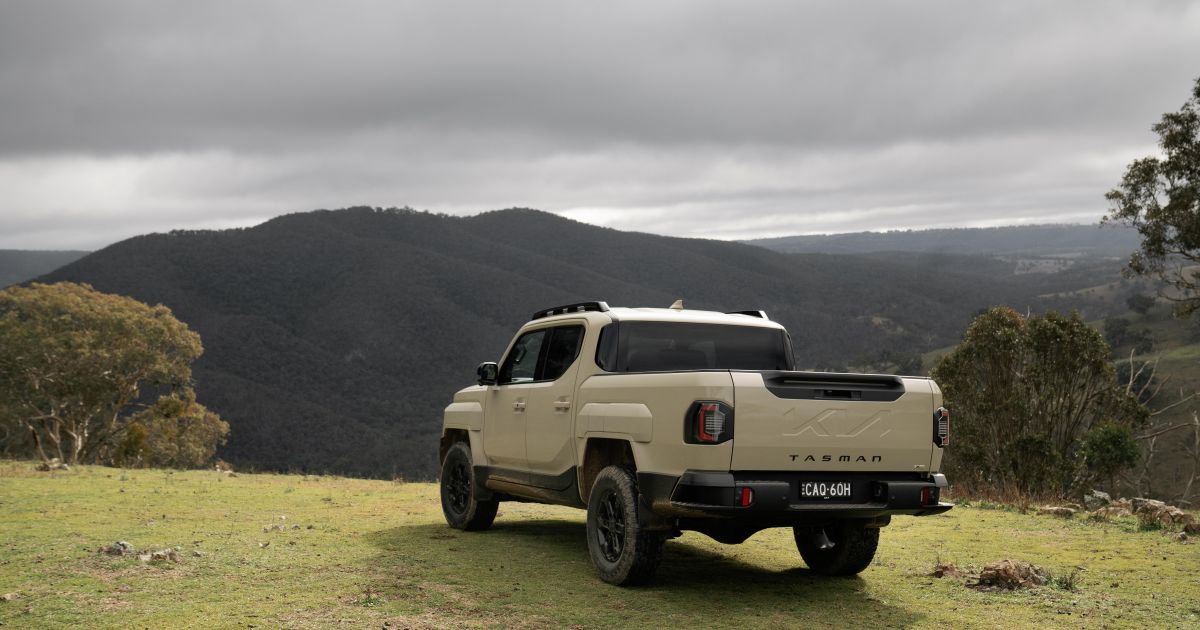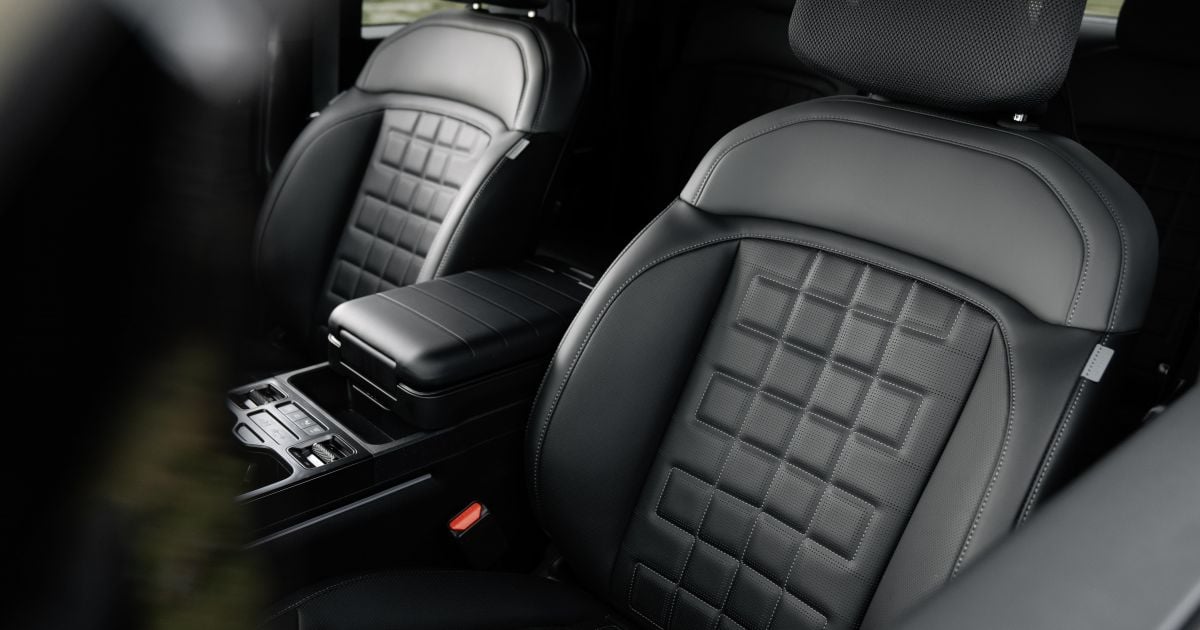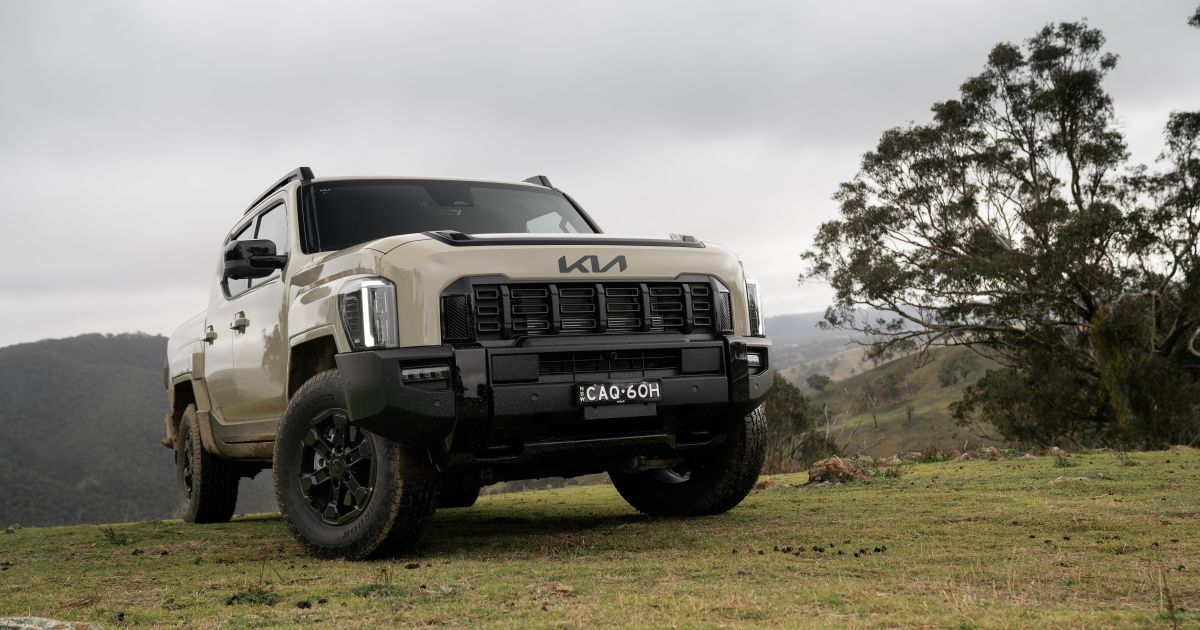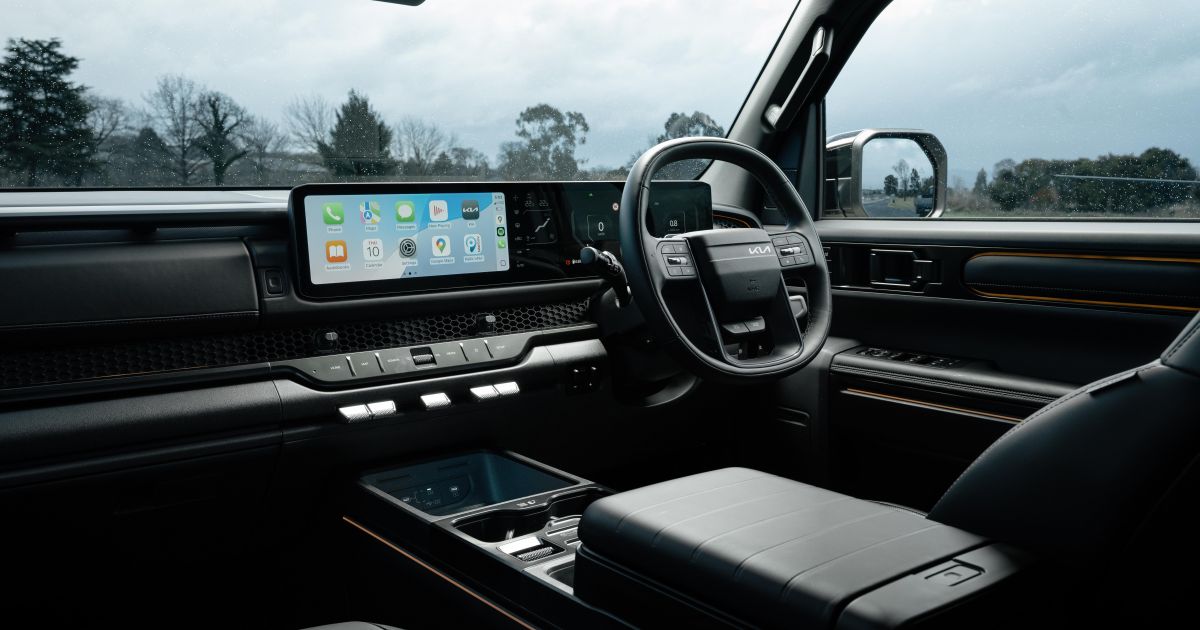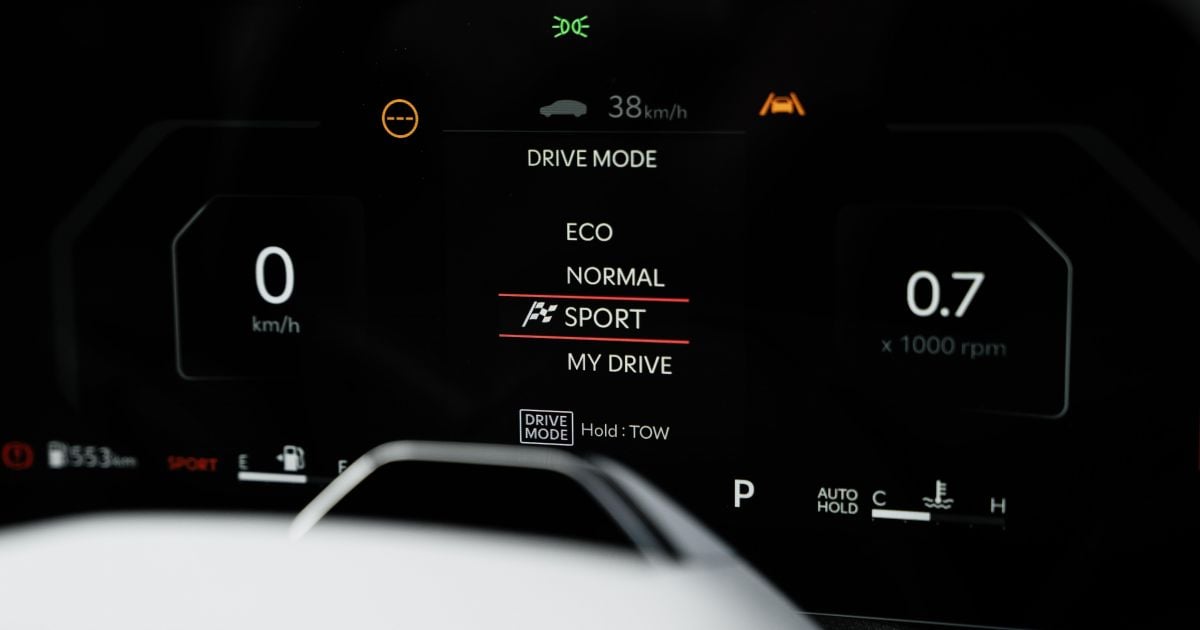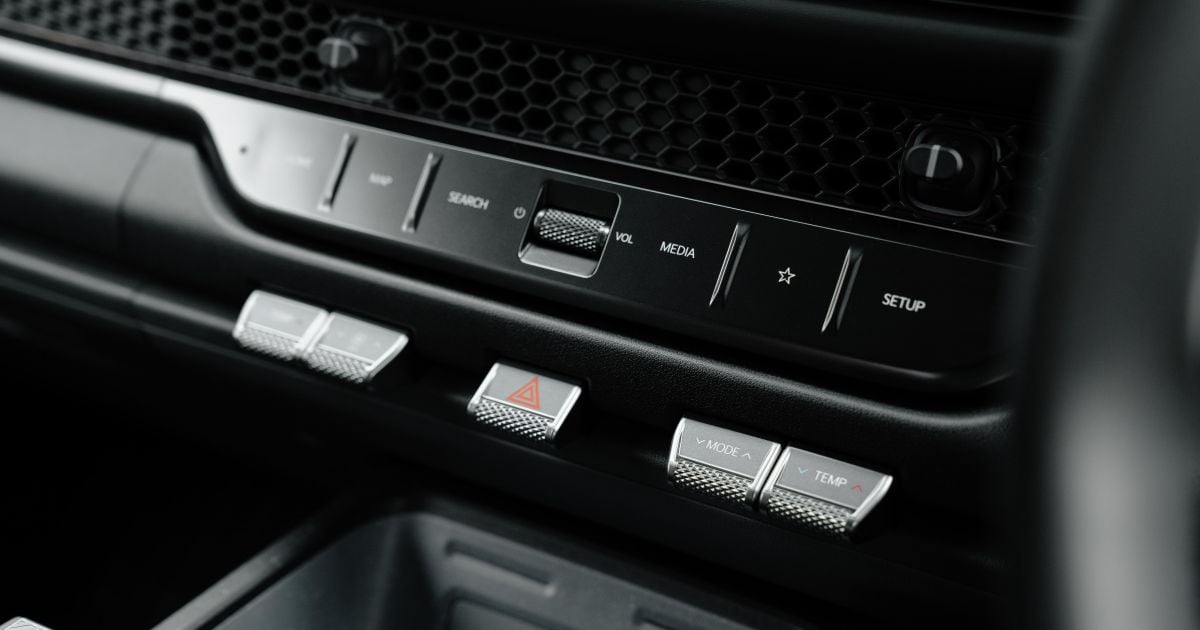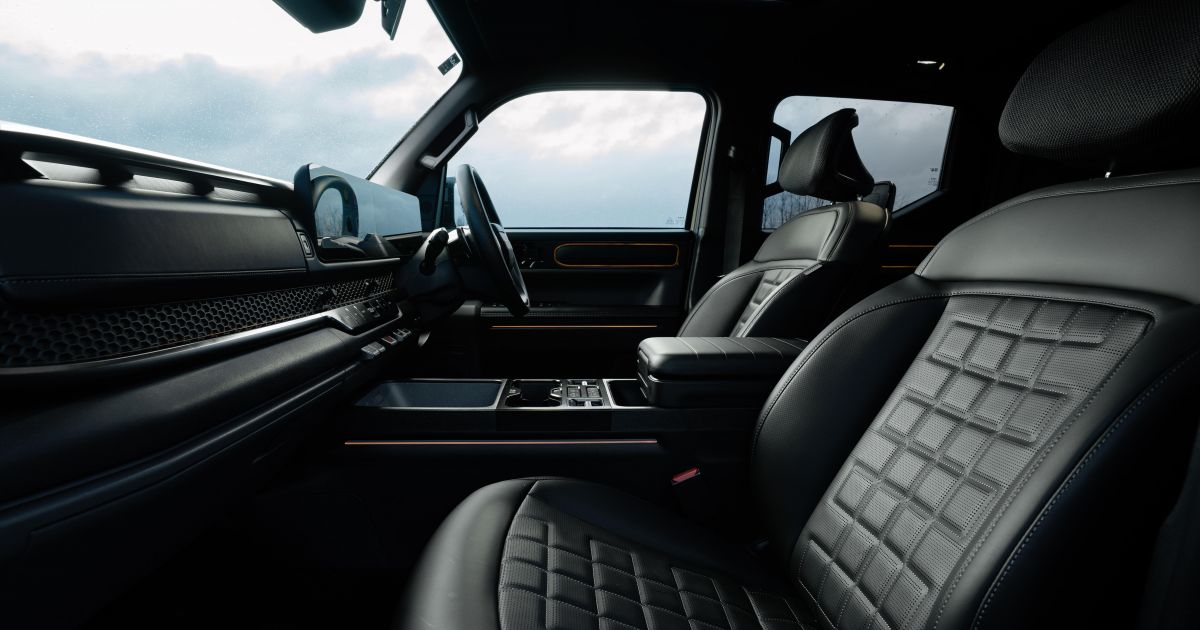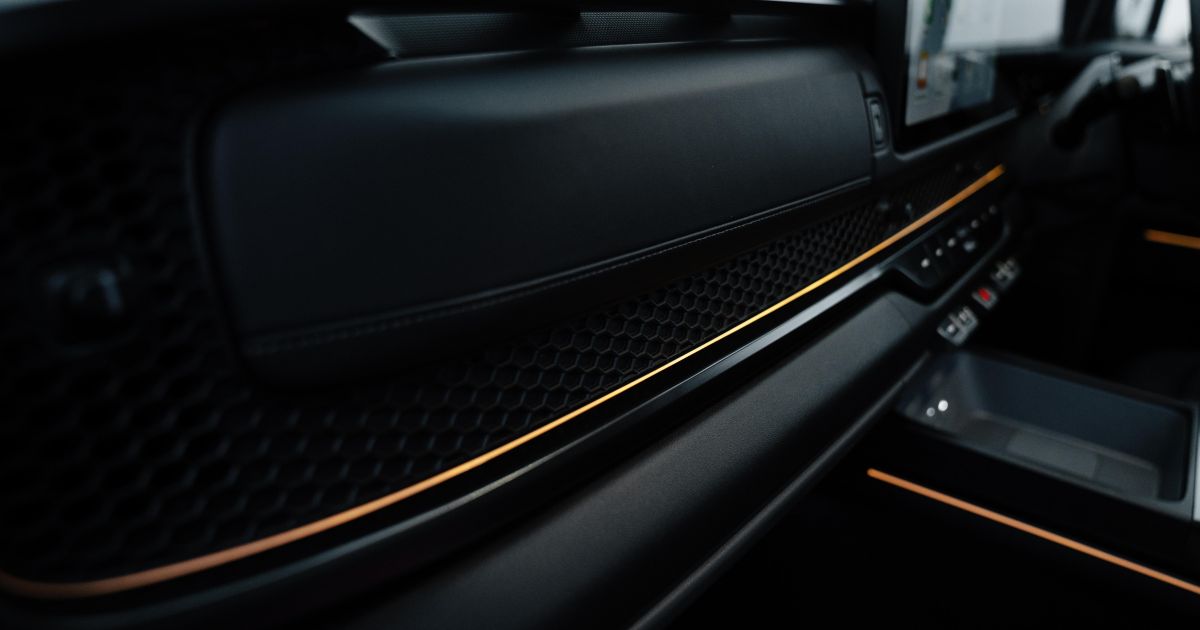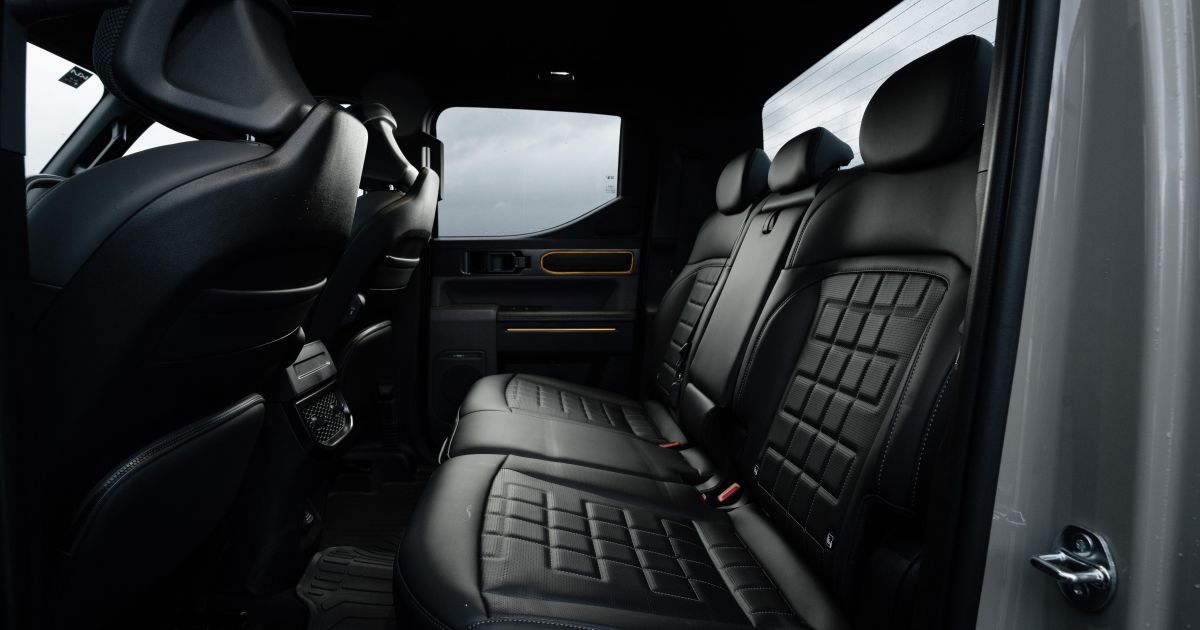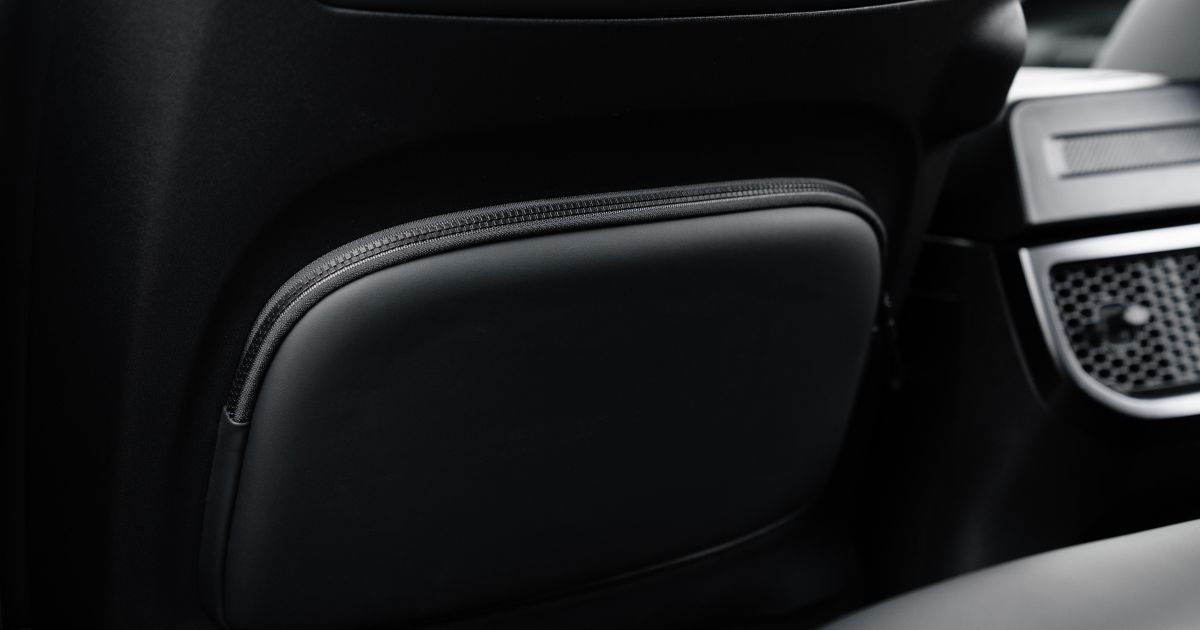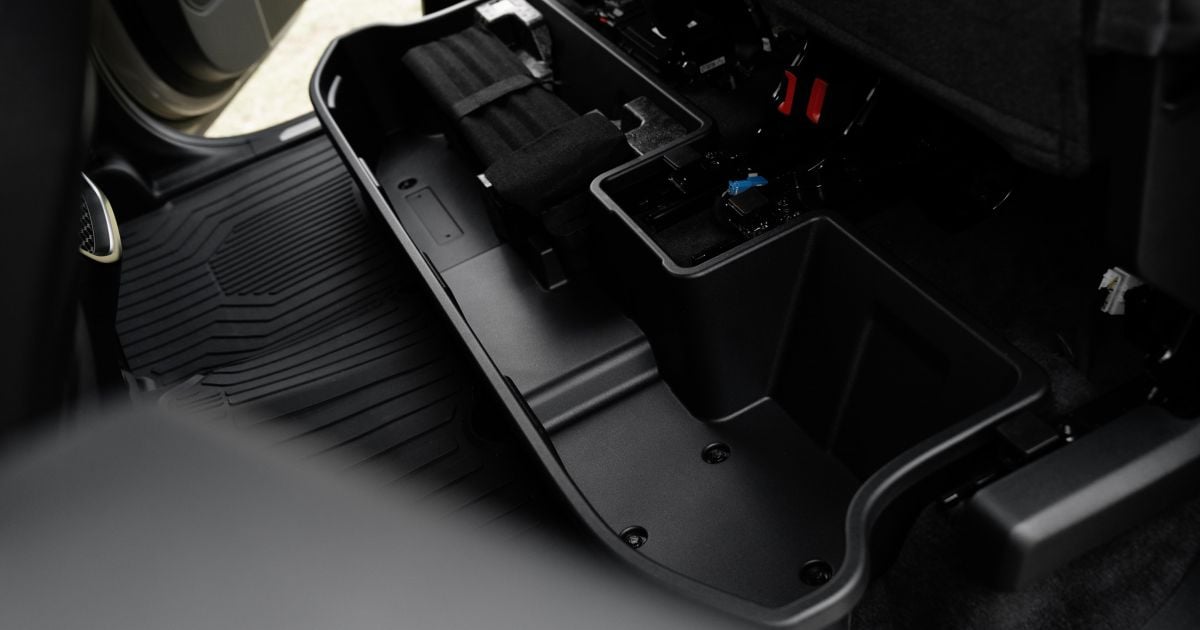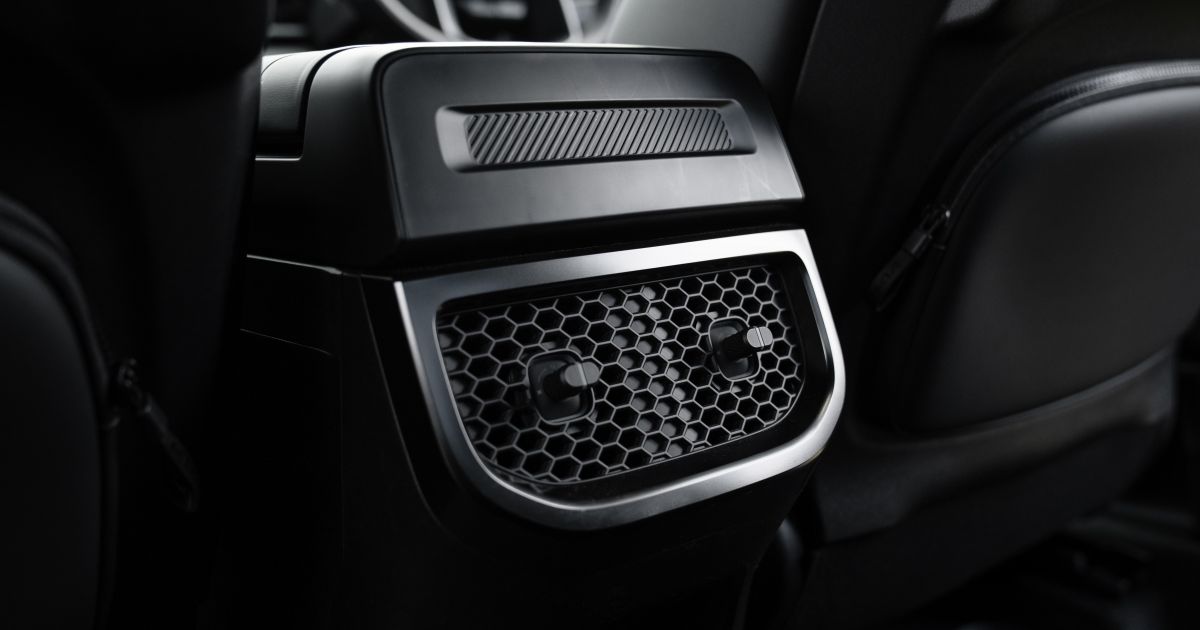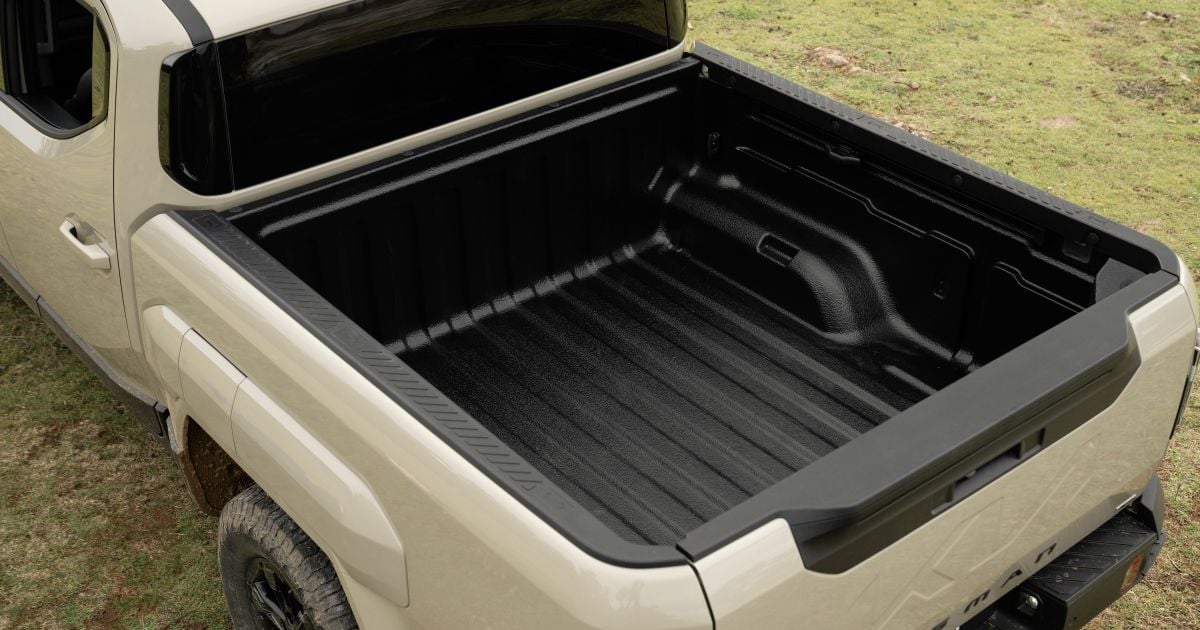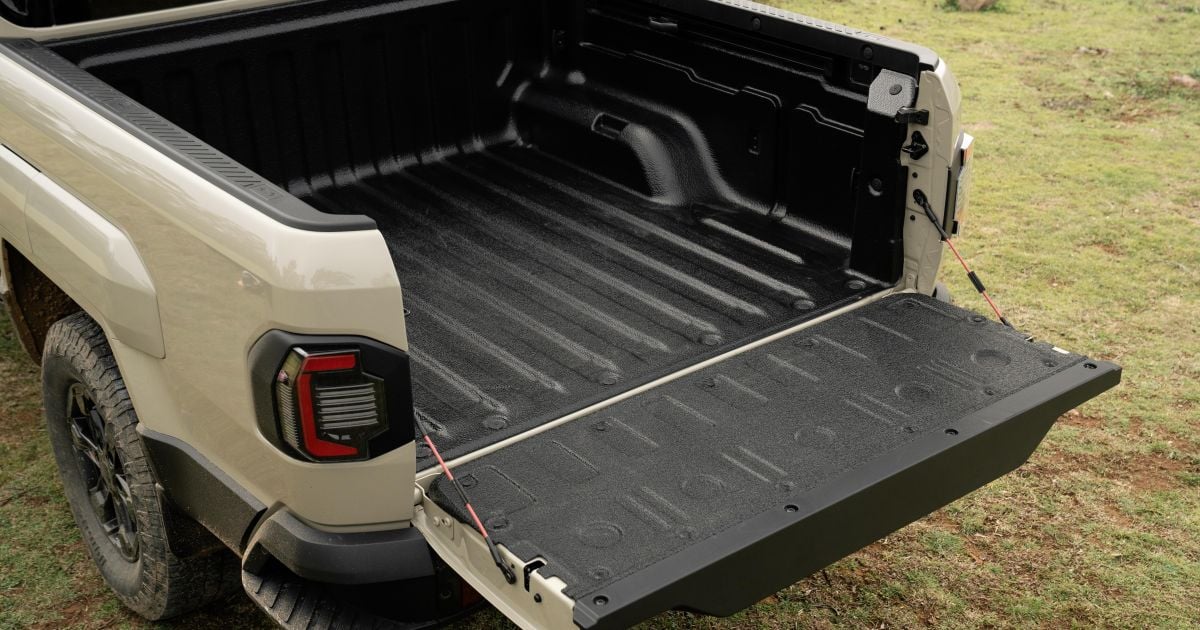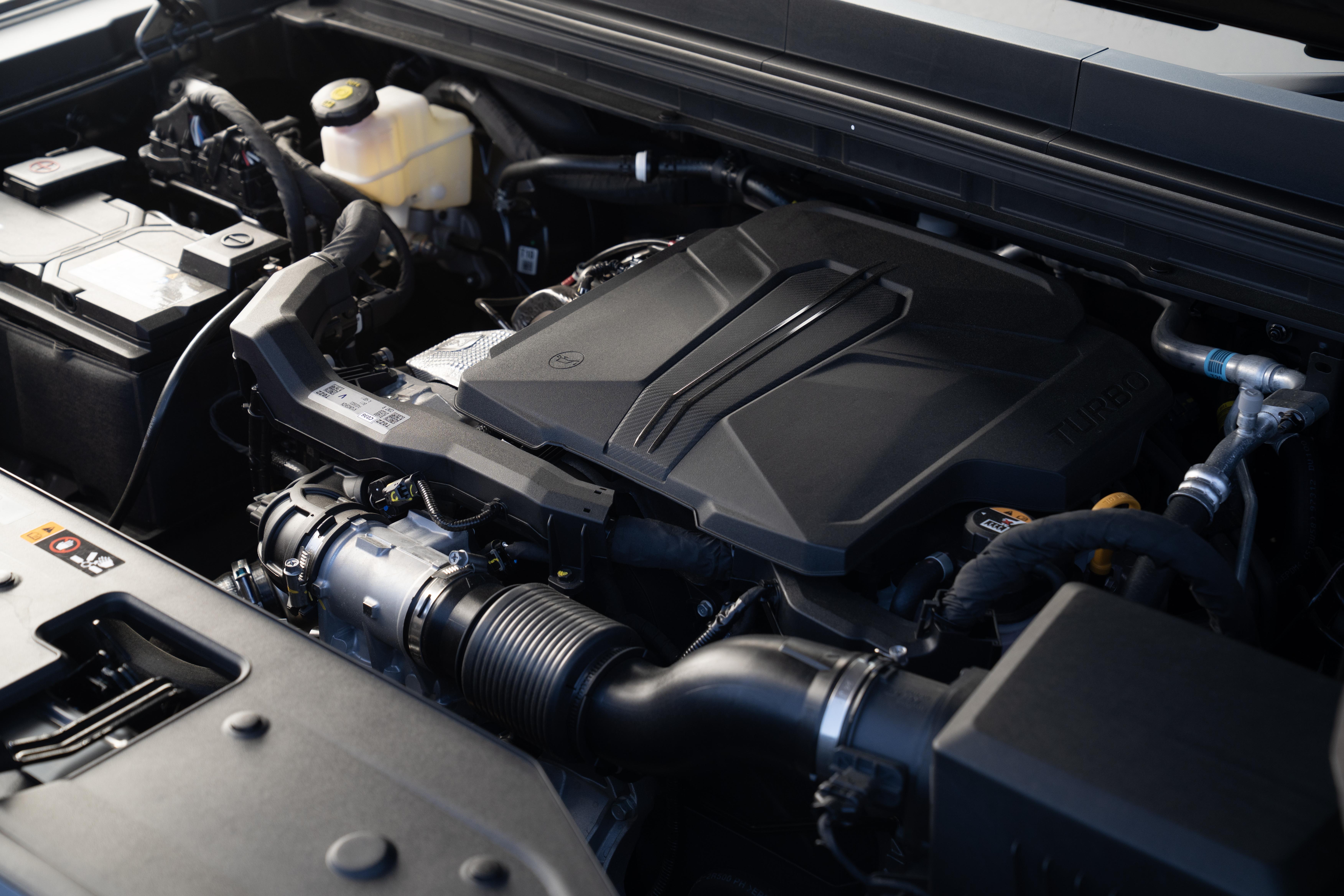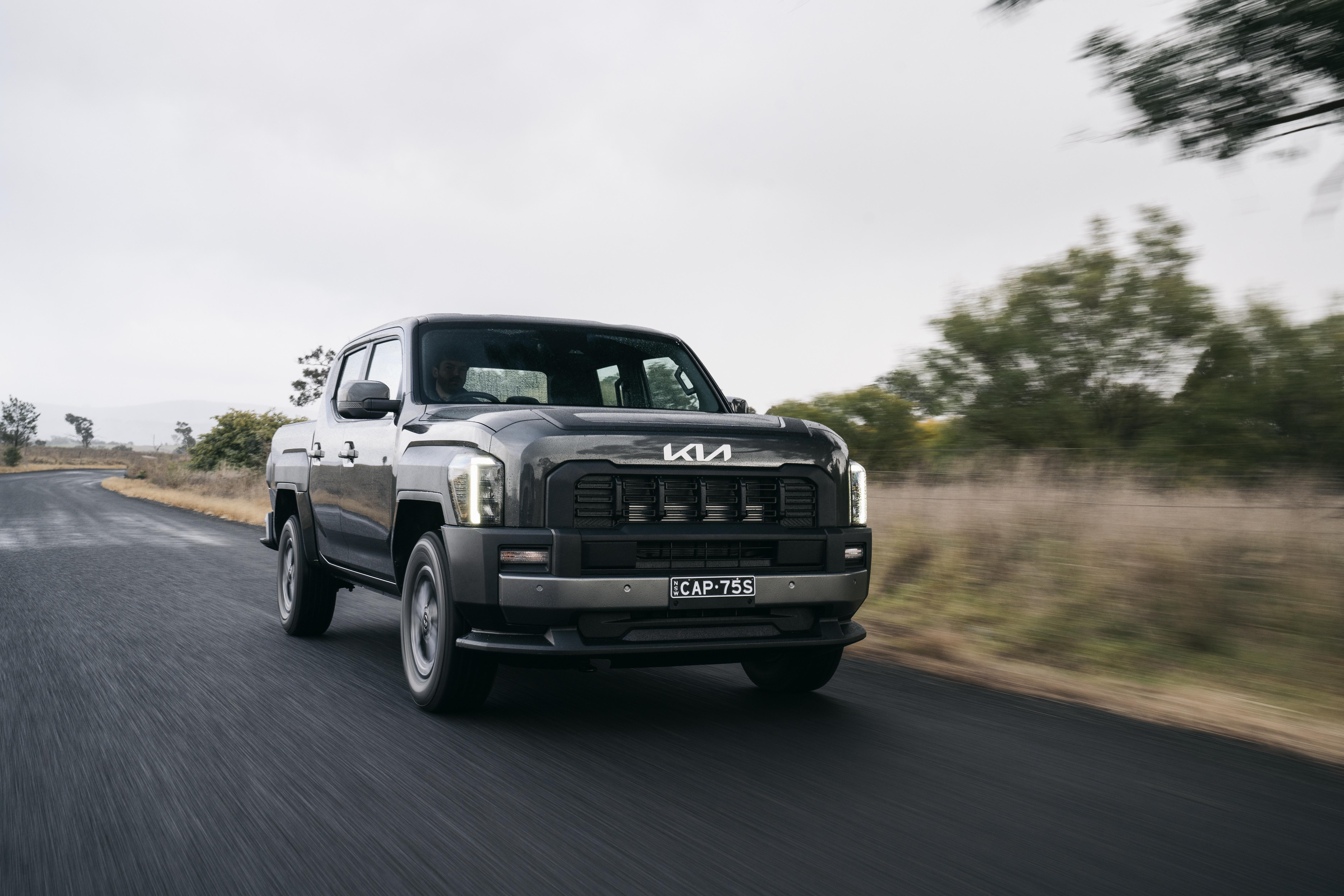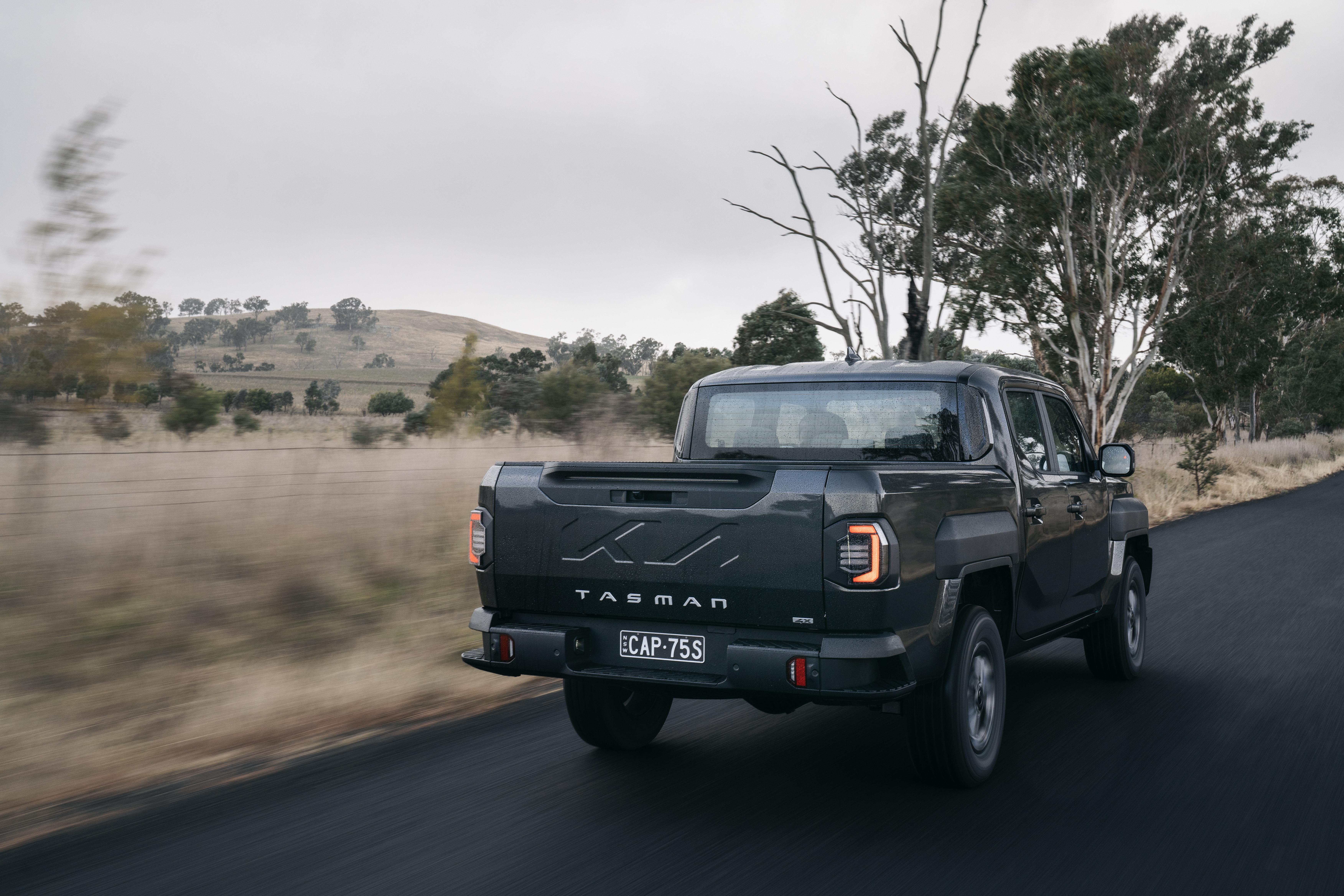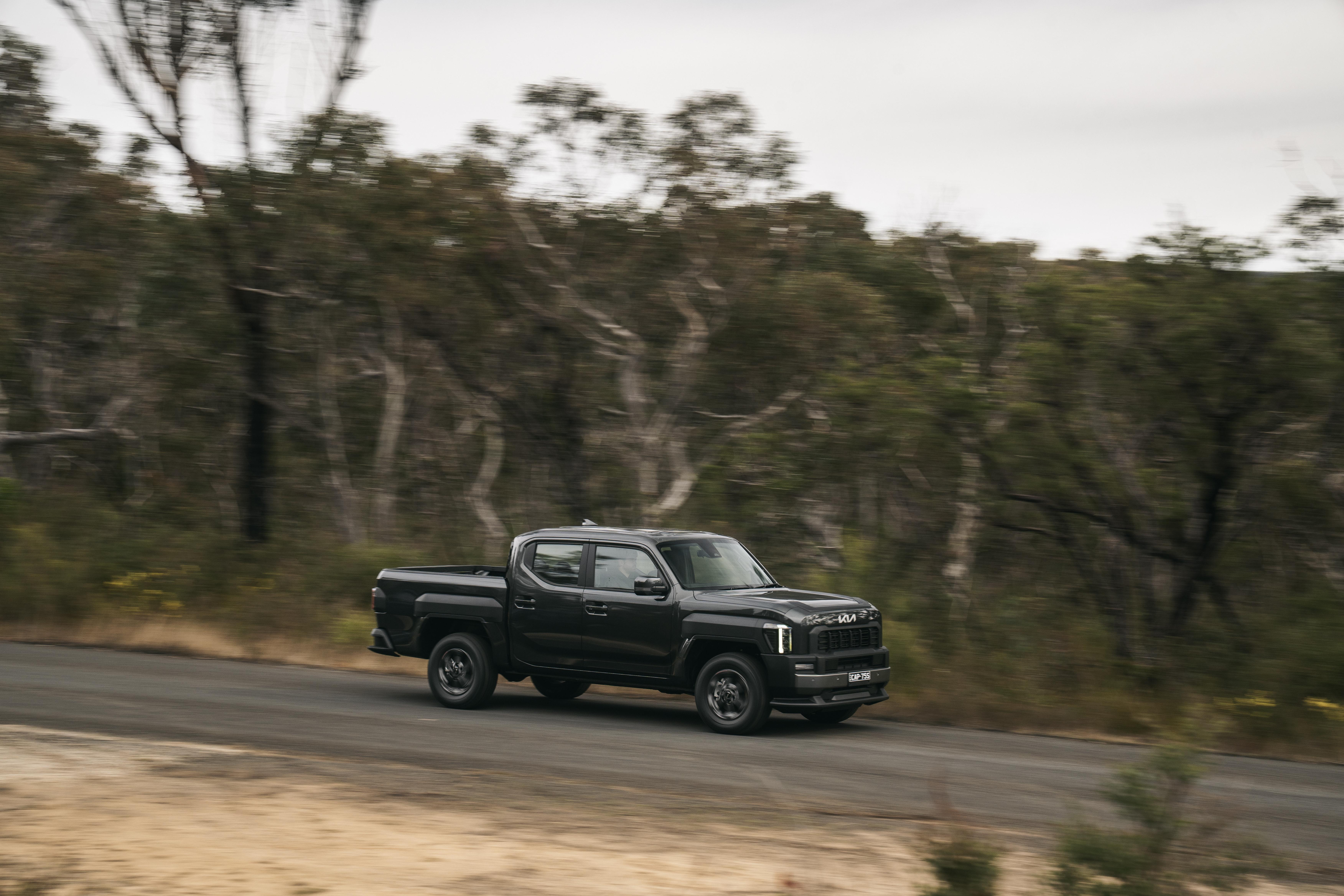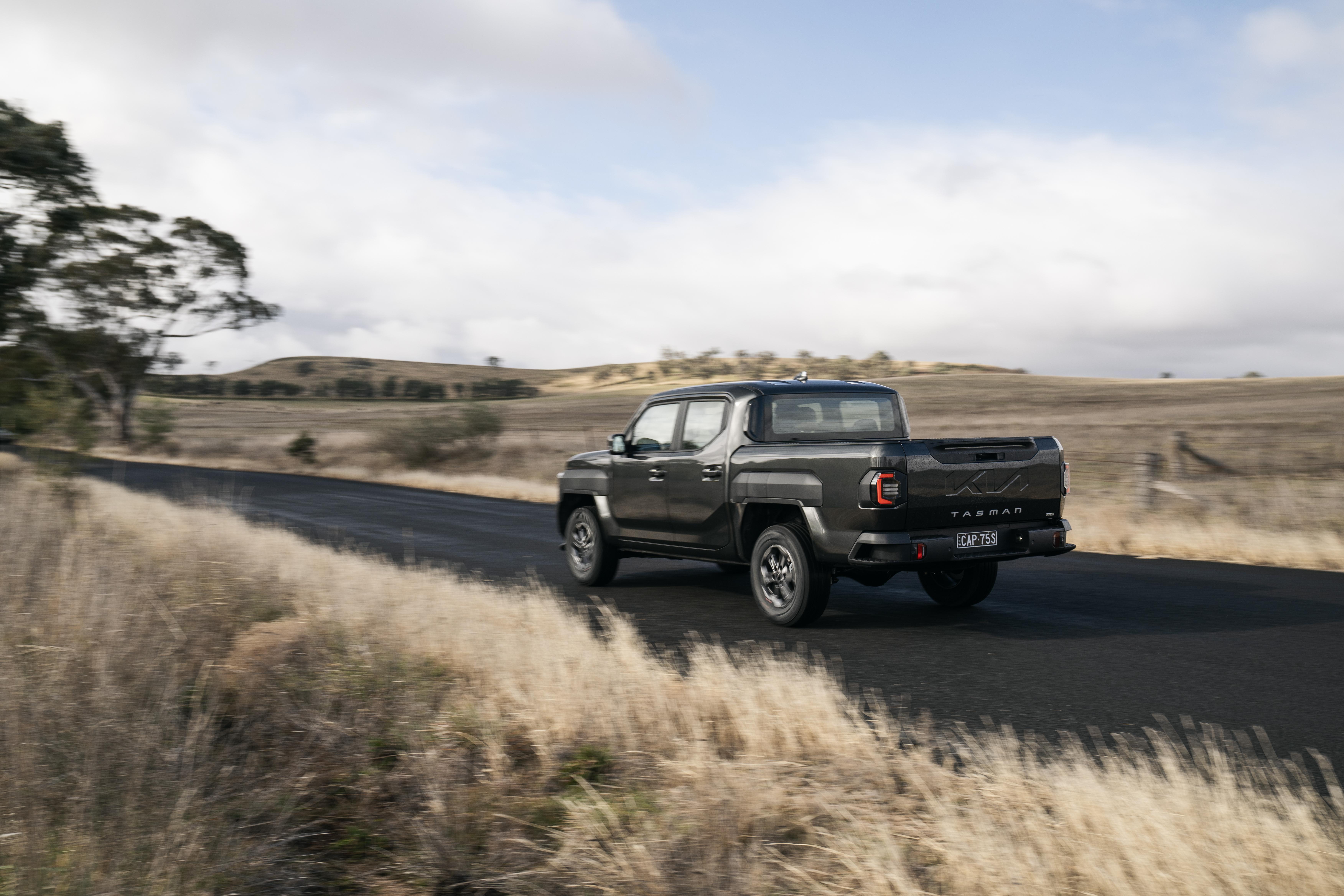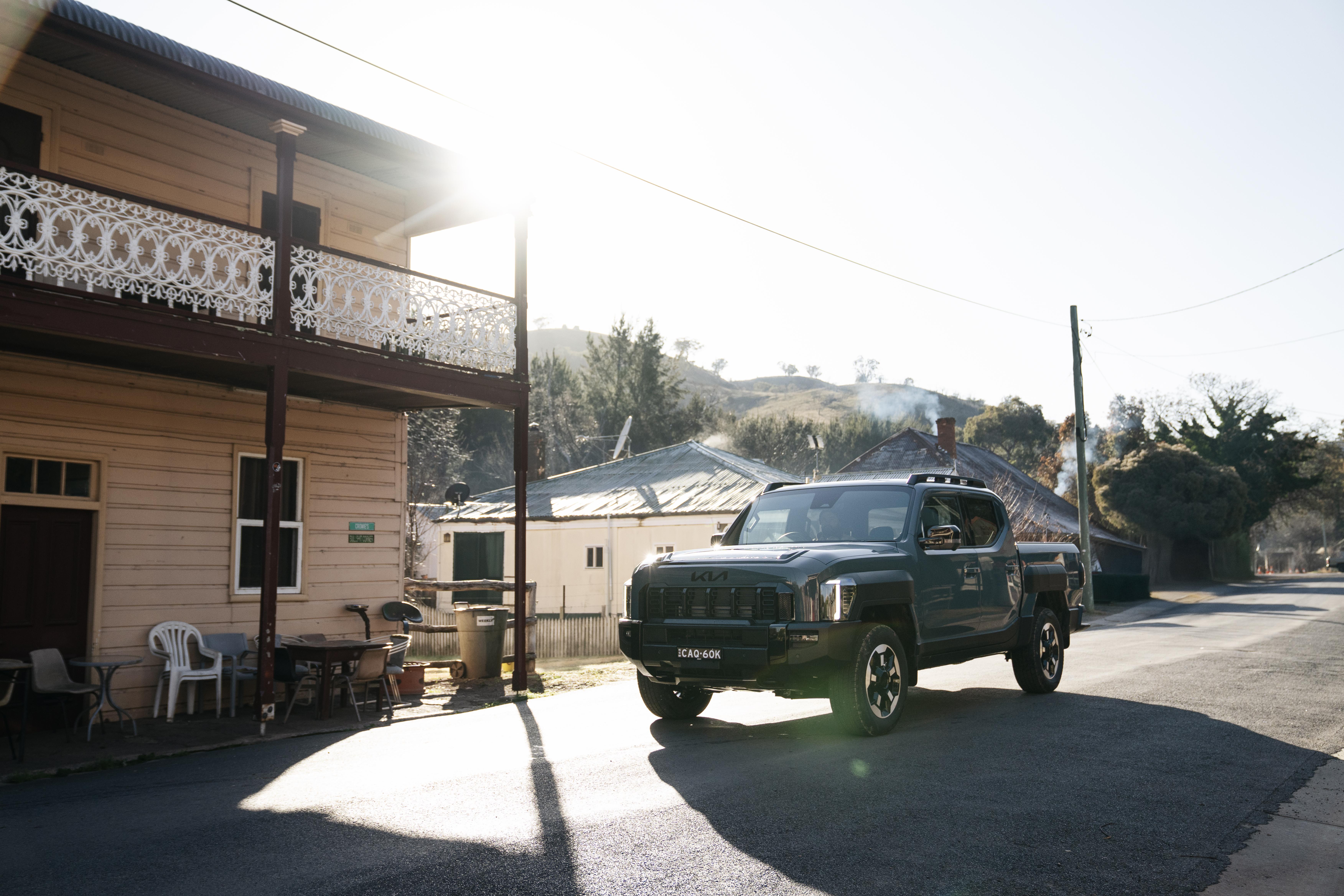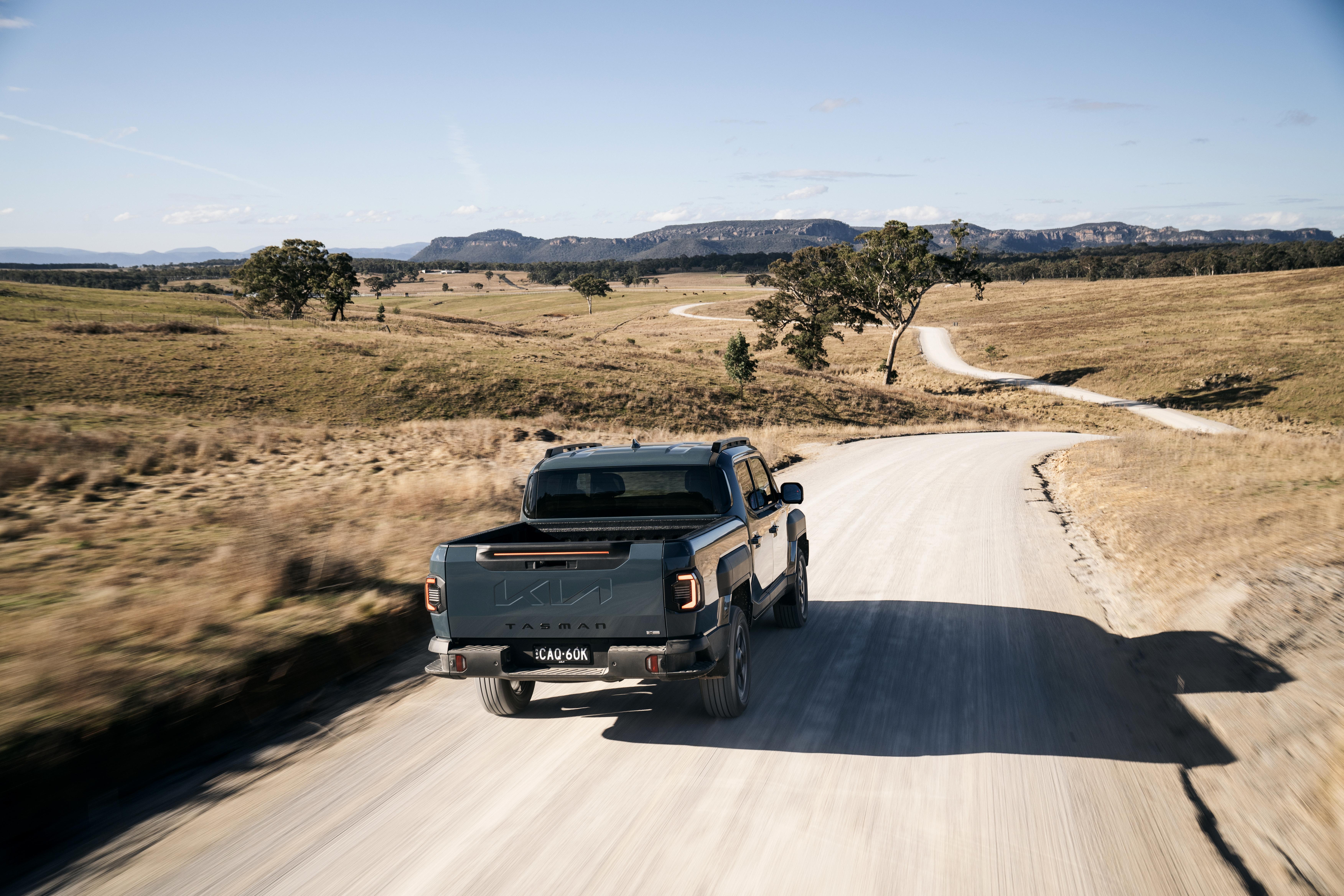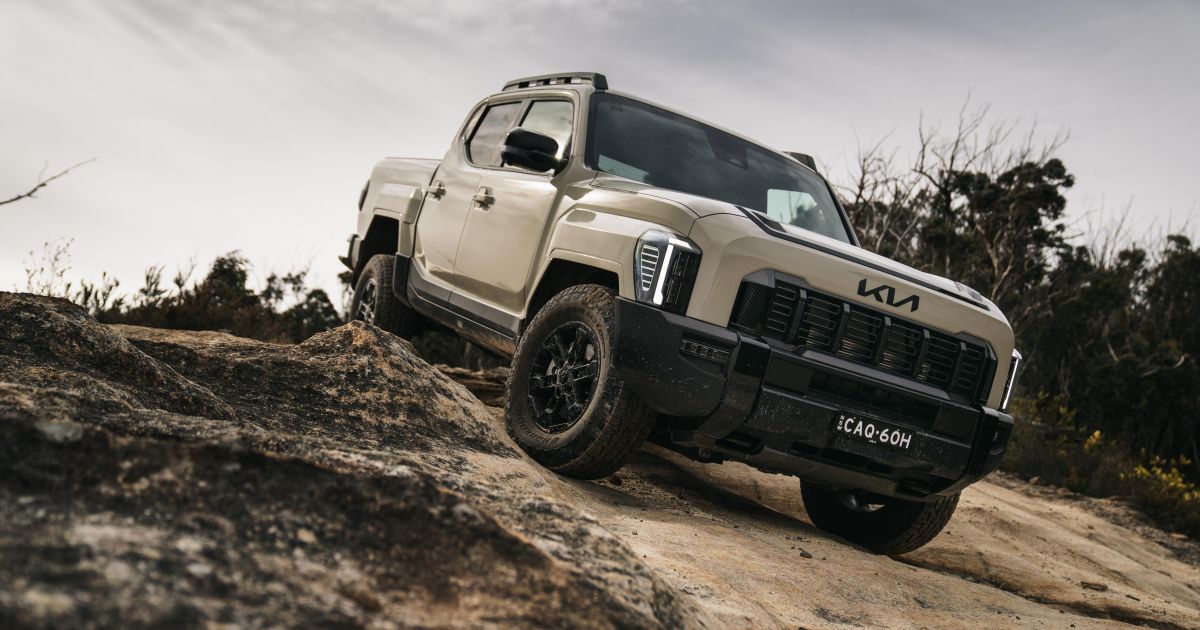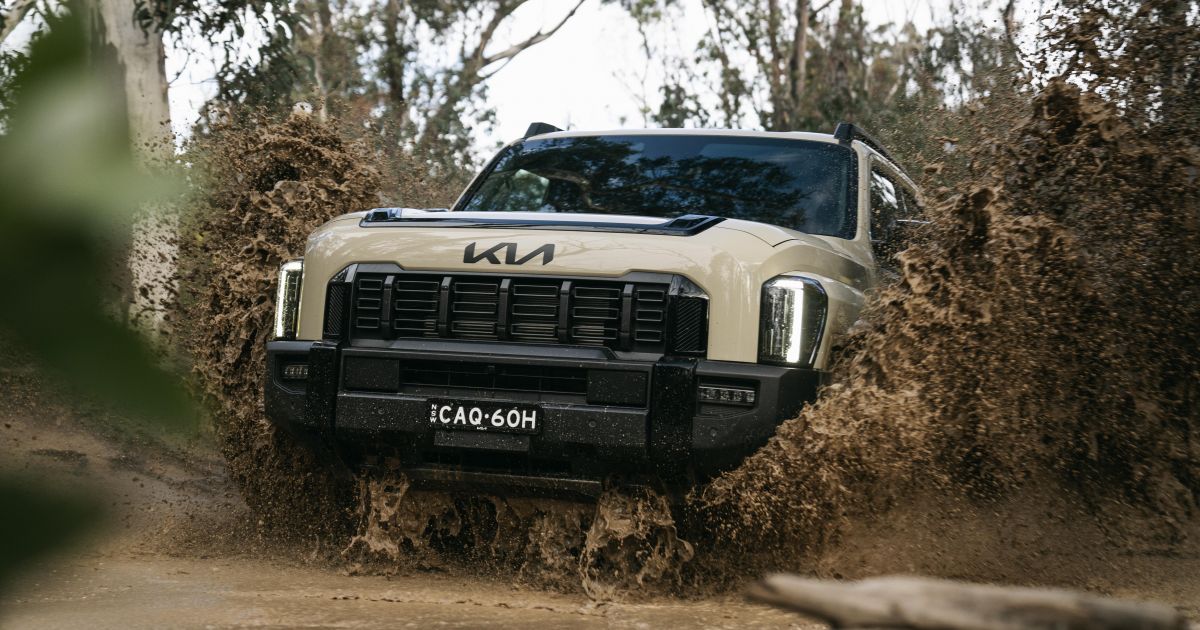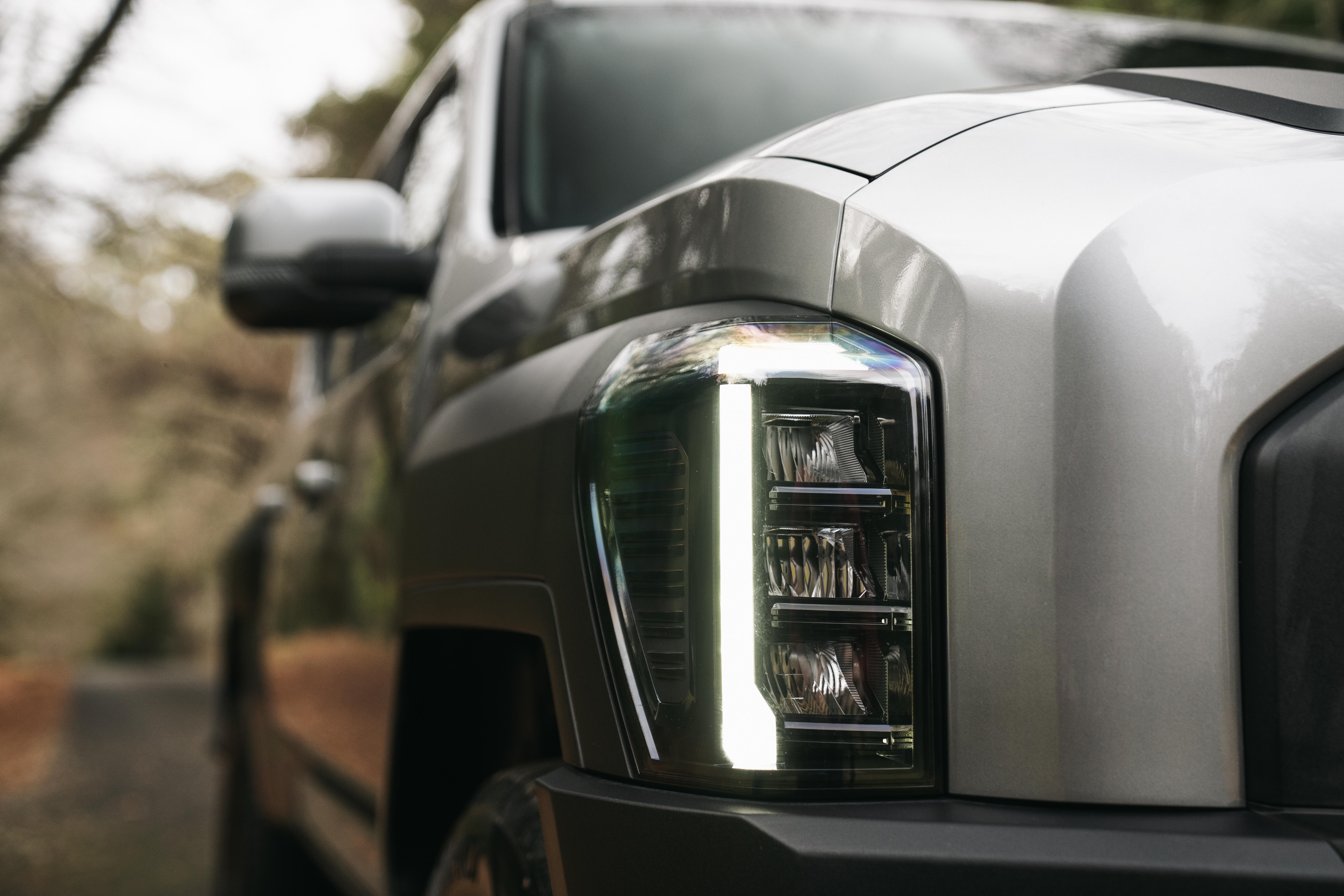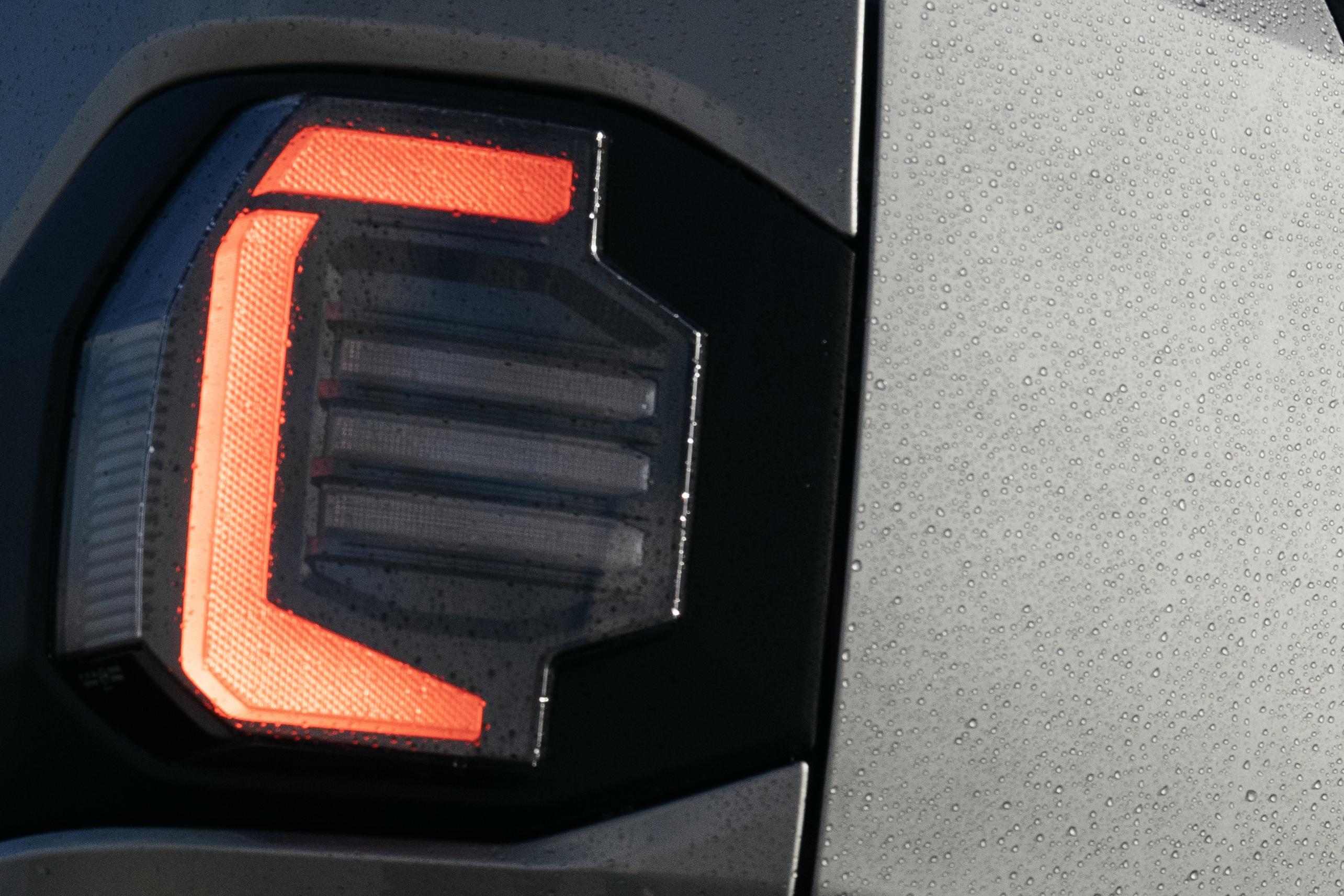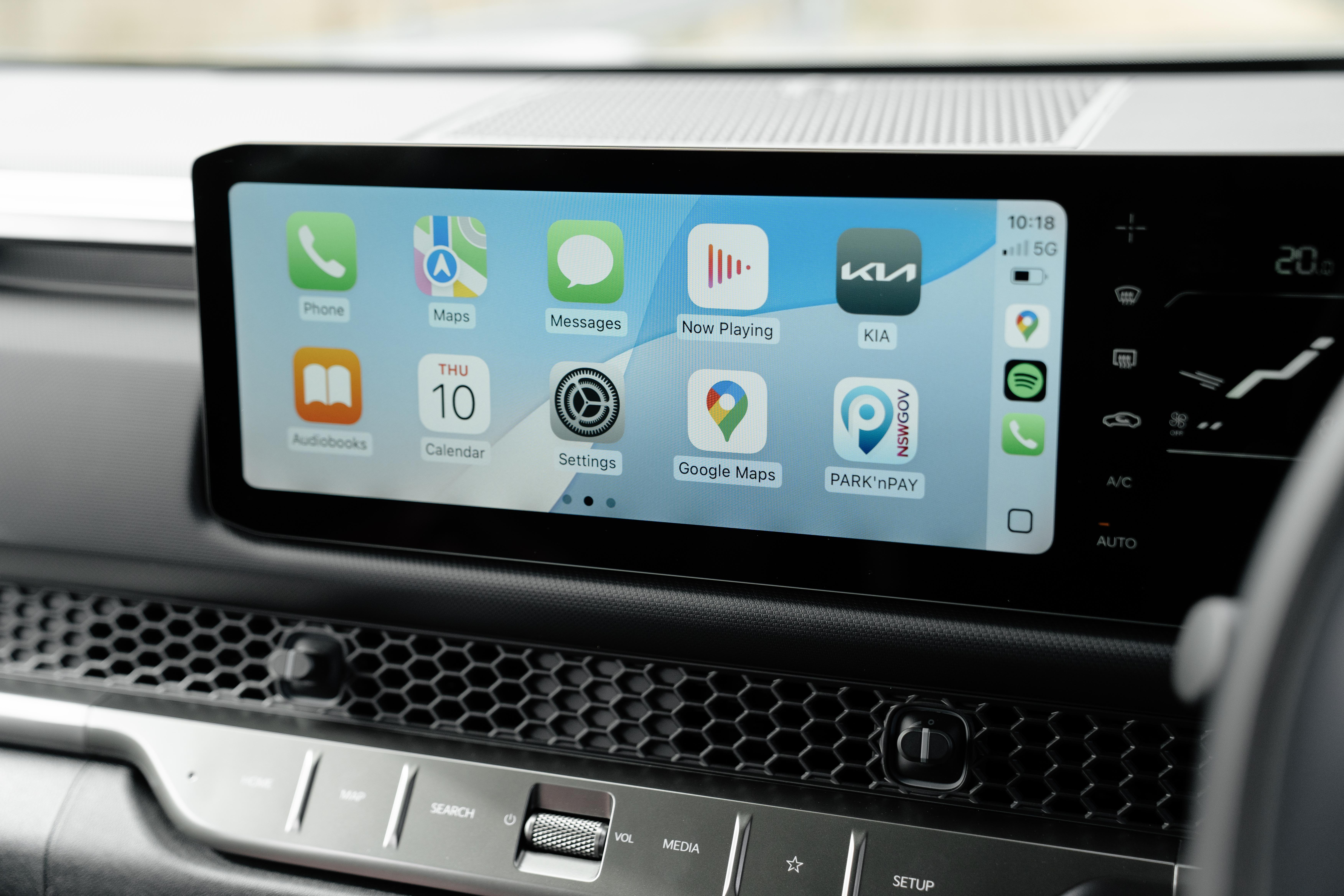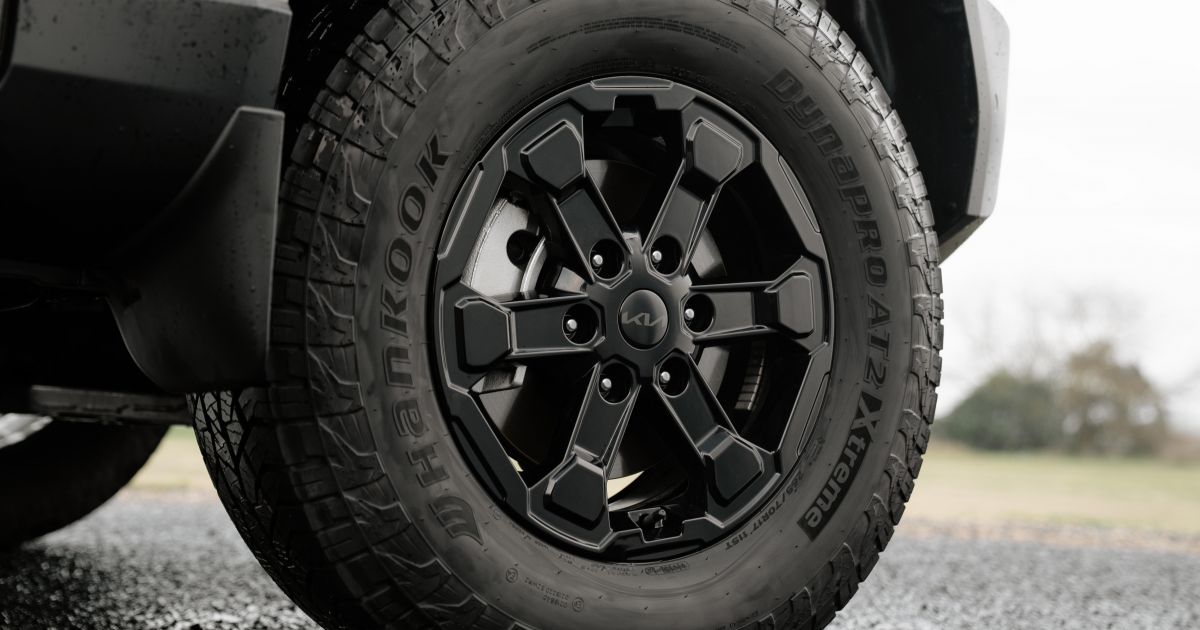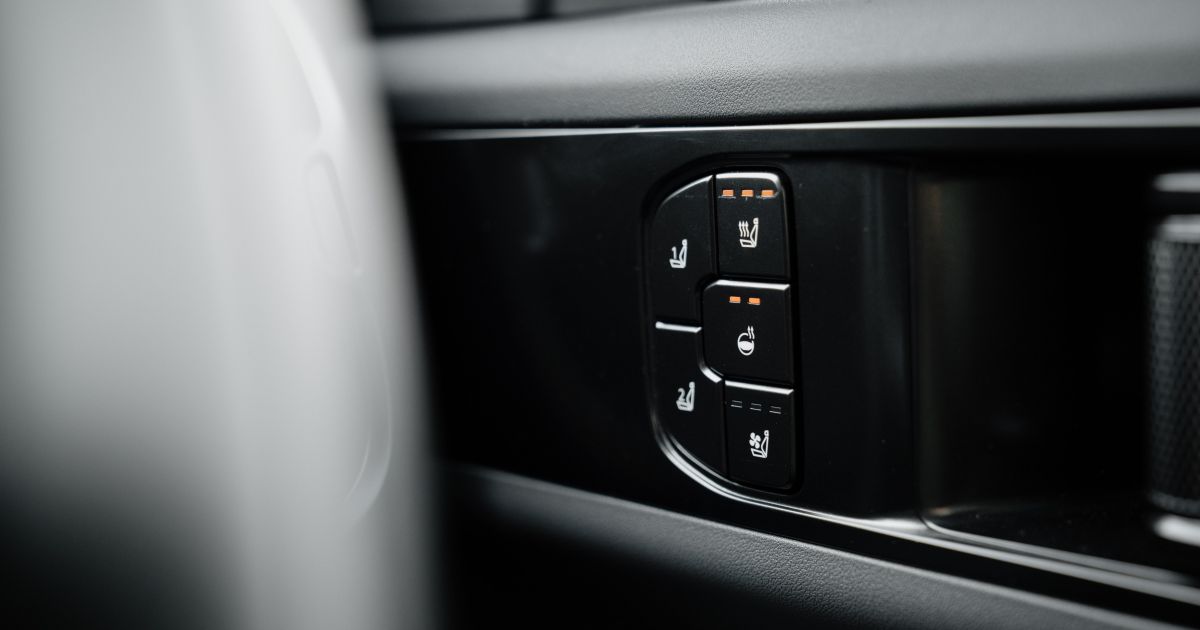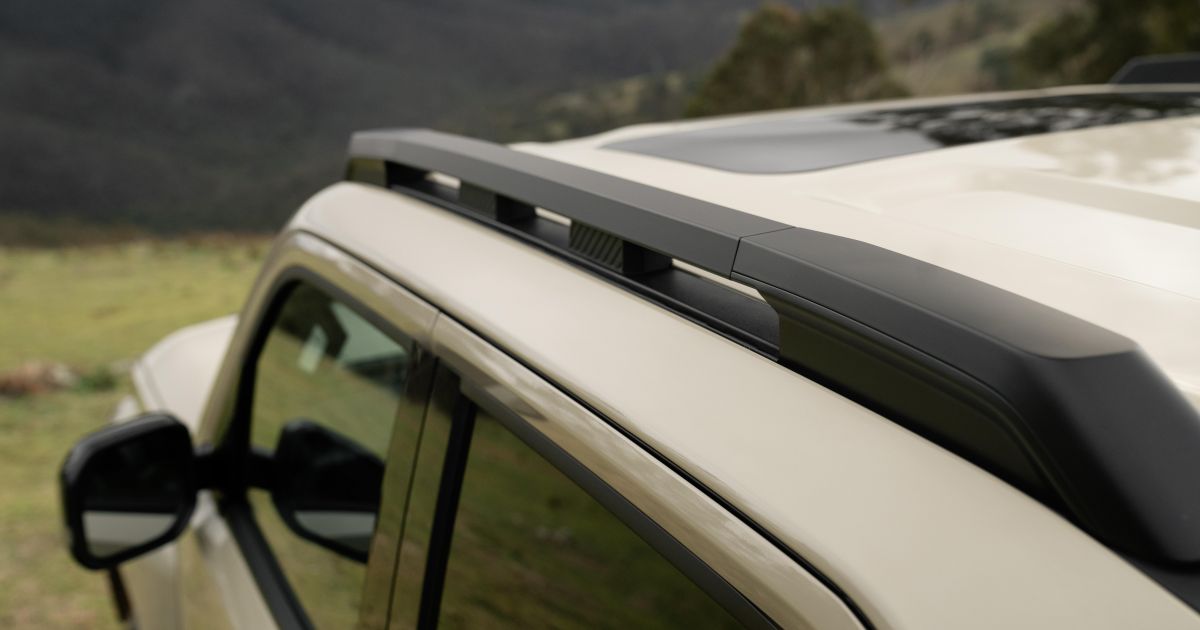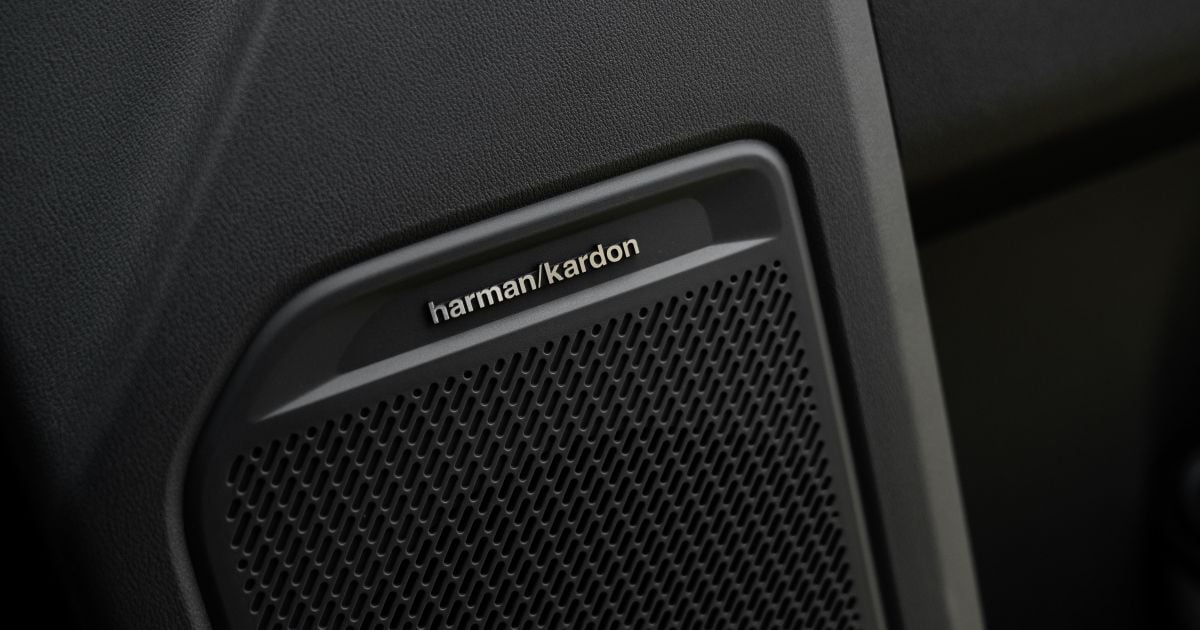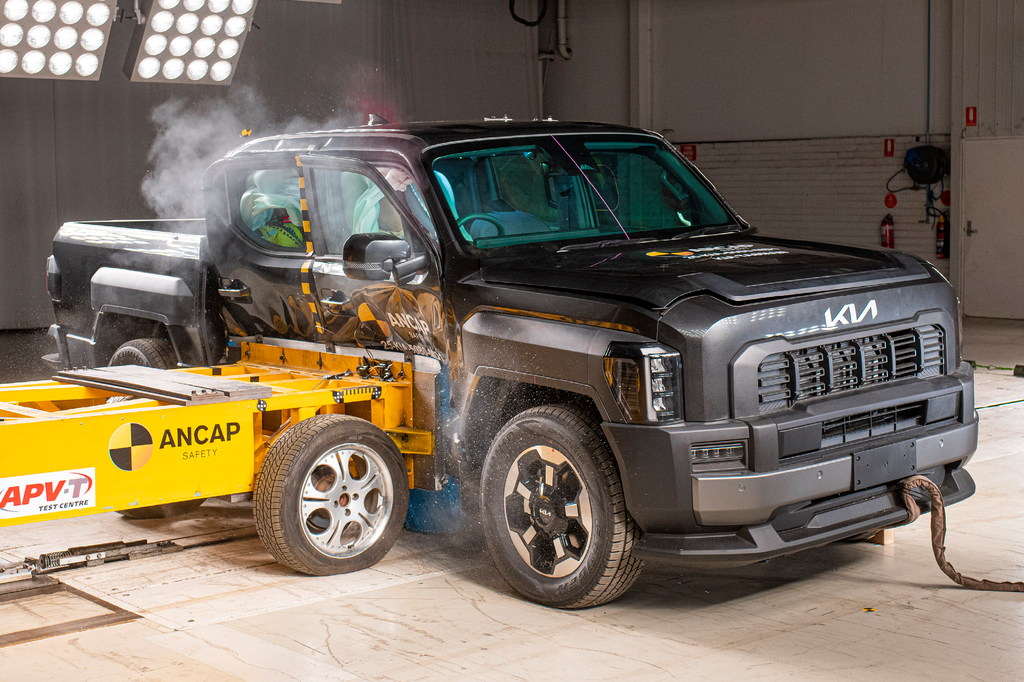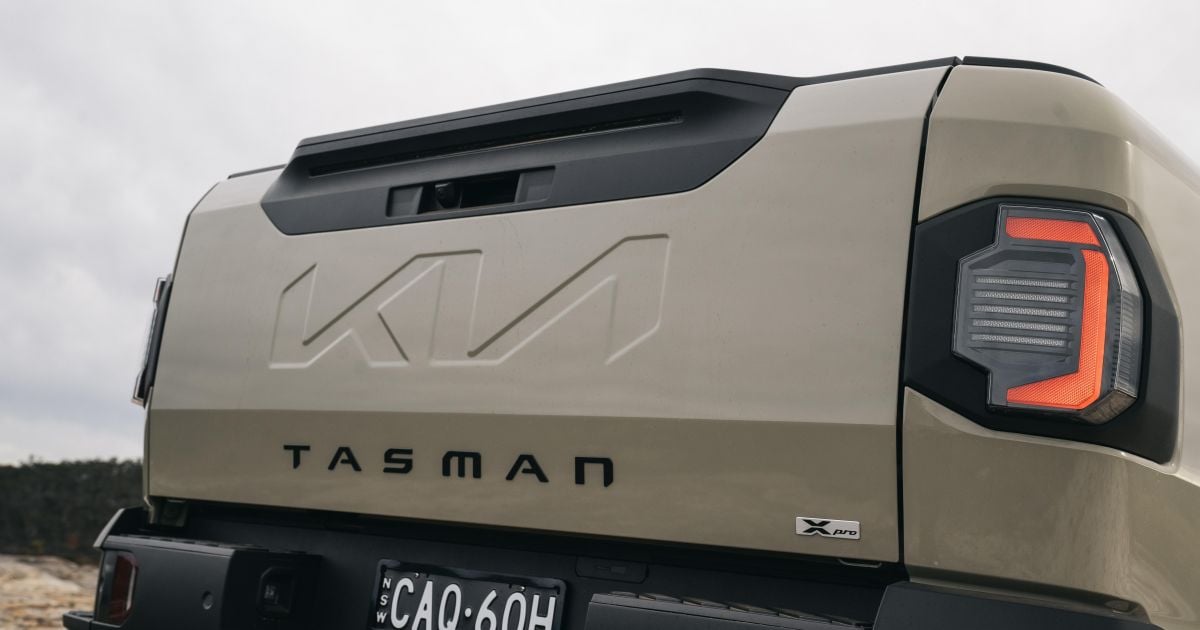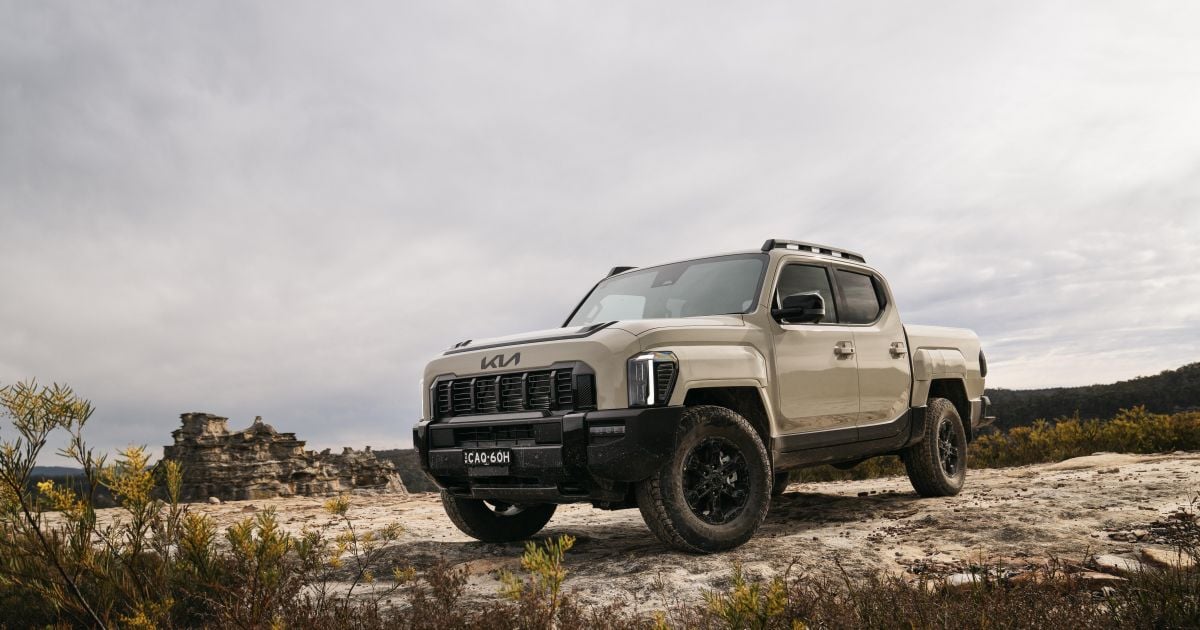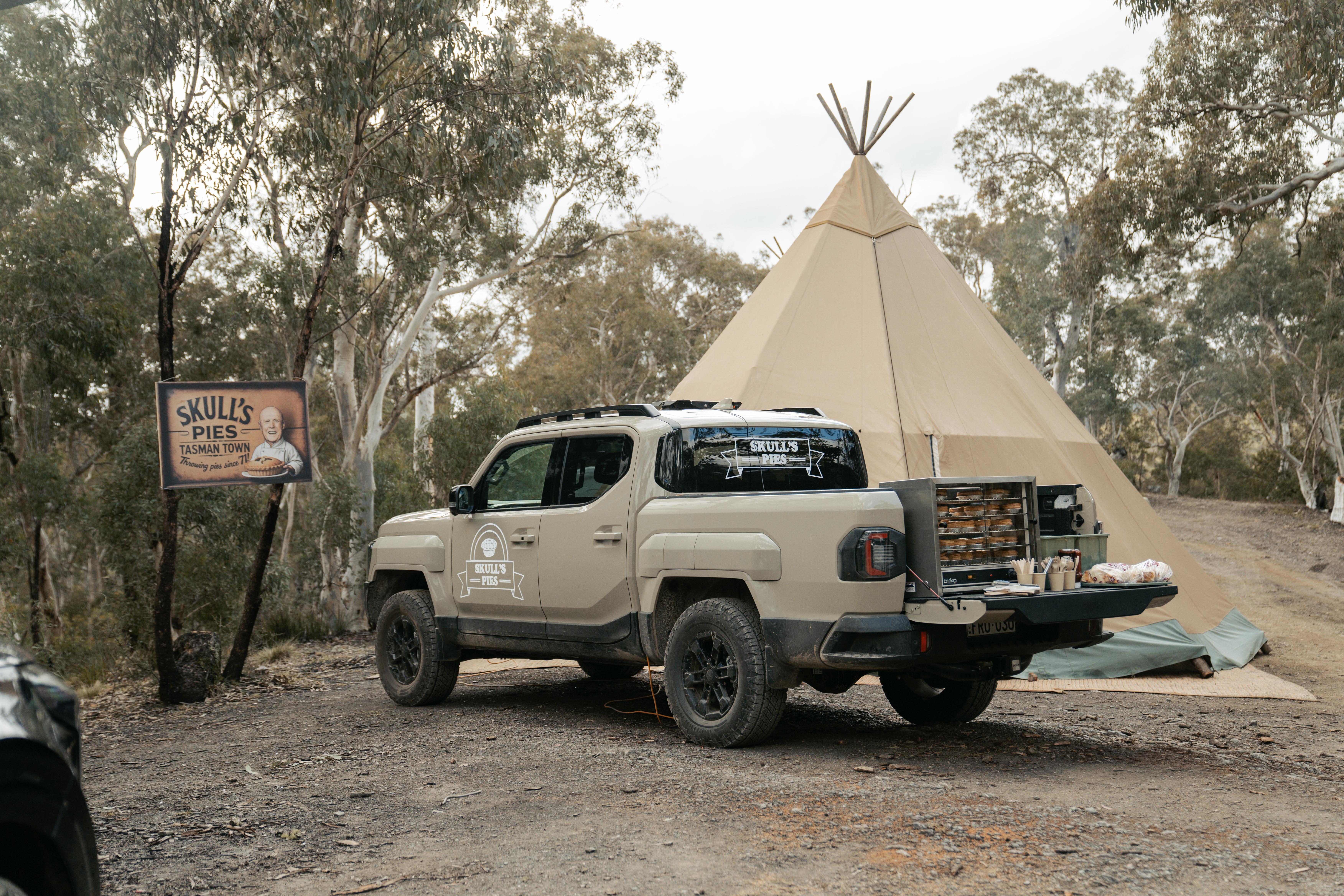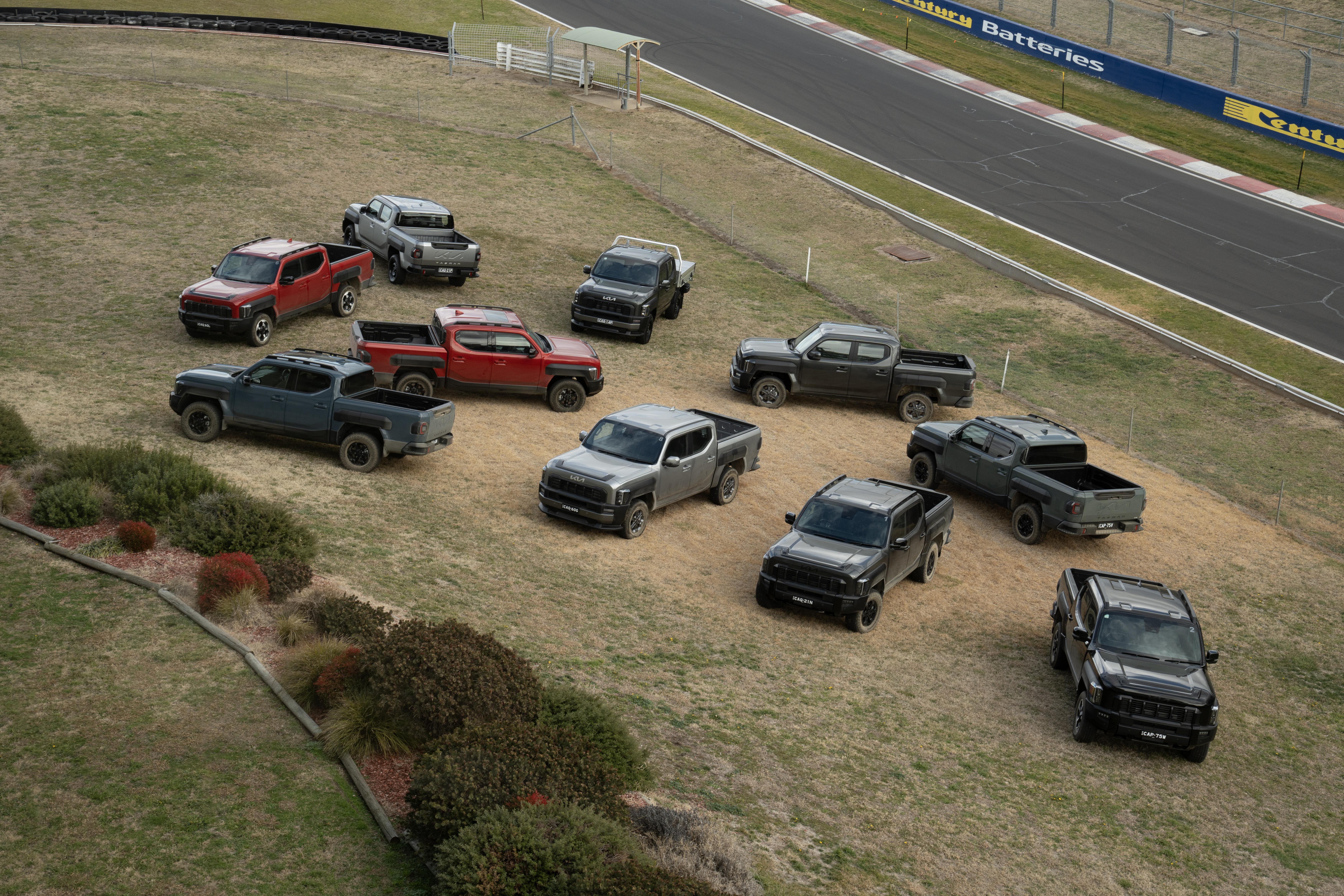It’s been a long time coming. But after years of rumours, hype and celebrity-heavy marketing, the Kia Tasman ute is finally here.
Named after the Tasman Sea and built with the Australian market front of mind, Kia wants the Tasman to be a top-five best-selling ute Down Under, where it’s set to compete head-on with some of the nation’s top-selling models in the Ford Ranger, Toyota HiLux, Isuzu D-Max, and Mitsubishi Triton, just to name a few.
Like the above rivals, the foundations of the Tasman are simple and proven – a turbo-diesel engine mated to an automatic transmission that sends power to all four wheels of a dual-cab four-door ute (for now) based on a ladder frame.
What’s not so conventional, however, is the design of the Tasman. And boy haven’t we heard about it. Last year’s global reveal unleashed a tidal wave of criticism towards the appearance of Kia’s debut ute, and that tsunami has yet to subside.
Kia responded by doubling down on its star-studded ad campaign, recruiting some of the biggest names in Australian sport (plus Spanish tennis champion, Rafael Nadal) to divert attention elsewhere.
But now, with the Tasman officially in showrooms, it’s time to shift our focus back to the most important vehicle that Kia has ever launched in Australia.
From concept development to durability testing, Kia’s local arm has been at the forefront of the Tasman project every step of the way. If the Tasman succeeds, Kia will forever look upon Australia fondly, and likely offer a seat at the table when it comes to future product development.
Strong sales would also help to increase Kia’s overall market share – a key goal for the Korean manufacturer – and potentially make it a top-two auto brand in Australia behind Toyota.
So, there’s a lot on the line.
With that in mind, Kia invited us to Bathurst in New South Wales for two jam-packed days of driving, both on- and off-road, to get a true sense of where this fresh entrant sits in the ute hierarchy.
We were afforded the opportunity to sample the mid-spec SX, the semi-premium X-Line, and the rugged X-Pro flagship, and this review will mostly centre around the latter.
How much does the Kia Tasman cost?
The Tasman is more expensive than key rivals at the bottom of the range, but it tops out at a competitive $77,990 drive-away – on par with the D-Max Blade and less than the V6 Ranger Wildtrak and HiLux GR Sport.
| Model | Price before on-roads | Drive-away price |
|---|---|---|
| 2025 Kia Tasman S 4×2 single-cab/chassis | $38,010 | TBC |
| 2025 Kia Tasman S 4×2 dual-cab pickup | $42,990 | $46,490 |
| 2025 Kia Tasman S 4×4 single-cab/chassis | $45,010 | TBC |
| 2025 Kia Tasman S 4×4 dual-cab/chassis | $48,240 | TBC |
| 2025 Kia Tasman SX 4×4 single-cab/chassis | $49,520 | TBC |
| 2025 Kia Tasman S 4×4 dual-cab pickup | $49,990 | $53,890 |
| 2025 Kia Tasman SX 4×4 dual-cab/chassis | $52,740 | TBC |
| 2025 Kia Tasman SX 4×4 dual-cab pickup | $54,490 | $58,490 |
| 2025 Kia Tasman SX+ 4×4 dual-cab pickup | $62,390 | $66,490 |
| 2025 Kia Tasman X-Line 4×4 dual-cab pickup | $67,990 | $70,990 |
| 2025 Kia Tasman X-Pro 4×4 dual-cab pickup | $74,990 | $77,990 |
We cycled through the SX dual-cab, X-Line, and X-Pro throughout the launch event, spending the most time behind the wheel of the latter flagship variant.
To see how the Kia Tasman lines up against the competition, check out our comparison tool
What is the Kia Tasman like on the inside?
Kia may have overdone it with the exterior styling of the Tasman, but the interior is the Korean manufacturer at its forward-thinking best.
ABOVE: Tasman X-Pro
The cabin is spacious, user-friendly and thoroughly modern, with a long list of tech and features that puts many segment mainstays to shame.
At the centre of it all is Kia’s connected car Navigation Cockpit (ccNC) – a panoramic screen housing dual 12.3-inch displays, plus a digital climate control hub. All three are standard across the Tasman range – that’s right, there’s no punishment for buying the entry-level version.
The centre infotainment display is brimming with functionality, most of which is actually useful on a daily basis. That includes wireless smartphone mirroring, native satellite navigation from SX up, a detailed off-road display for the X-Pro, and extra mod cons such as connected services and voice control.
As you’d expect from a brand-new model, the graphics are sharp and there’s enough processing power to keep up with busy swiping and tapping.
Likewise, the digital instrument display is clear and well-organised. Unfortunately, the same can’t be said of the narrow climate panel – it’s obstructed by the steering wheel while driving, and although there’s the option to expand it to the infotainment screen, that could be considered the solution to a problem of Kia’s own creation.
Missing altogether is a head-up display, a nice-to-have that’s present in the BYD Shark 6 and GWM Cannon Alpha. Another slight letdown is the standard sound system, which makes your tunes sound a bit muddy, especially at higher volumes. That’s remedied by buying the X-Pro with its upgraded set of Harmon Kardon speakers.
A neat assortment of physical buttons and switches control key vehicle functions such as climate settings and audio output, while also providing shortcuts to commonly visited infotainment menus. The dash layout is intuitive, demonstrating that Kia understands the needs of Australian ute buyers.
That’s also made clear by the inclusion of clever storage solutions in the Tasman. The cabin is not only roomy – the Tasman X-Pro is longer, wider and taller than a Ranger Wildtrak – but it’s also laden with nooks and cubbies.
There’s no denying that the door bins and glovebox are on the shallow side, but that’s offset by the presence of an extra compartment above the glovebox. And while the centre console mightn’t appear special, the lid is unique in that it folds forwards to create a flat table suitable for in-car work stints.
That also exposes a bin with decent space and a 12V power outlet. Two USB-C outlets can be found under the centre stack, and the X-Pro adds dual wireless charging pads.
The front seating arrangement differs depending on variant, but there’s no questioning the comfort of the X-Pro. It comes equipped with quilted leatherette seats that are both heated and ventilated, and fully power-adjustable, of course.
Even the entry-level cloth seats are fit for purpose, packing plenty of cushioning and lateral support, as well as a soft headrest that wraps around your skull. Stepping up to the X-Pro also brings a heated leatherette steering wheel.
Other common touch points including the armrests and dash are trimmed in soft-touch materials, elevating perceptions of quality, and the textured silver switchgear is more tactile than the Lego buttons you find in other utes.
Moving back to the second row, impressions of the Tasman’s cabin remain positive. Courtesy of its sheer size, the Tasman is spacious enough to seat five adults in comfort, so it’s bound to be the pick for a worksite carpool. Leg- and headroom are in ample supply unless you’re topping six-five, and the door panels feature padding at shoulder height – another thoughtful touch.
Higher-spec examples such as our X-Pro test vehicle gain heated outboard seats that can recline up to 30 degrees – both features that aren’t all that common in premium passenger cars, let alone mainstream utes. In fact, the GWM Cannon Alpha Ultra PHEV is the only rival to match the Tasman in this regard.
So, while the S and SX grades make a lot of sense for tradies hunting a new workhorse, the X-Pro is a standout option amongs the new wave of ‘lifestyle’ utes.
Family buyers will also be drawn to the assortment of amenities in the second row of the Tasman, ranging from flexible zip-up map pockets to an expansive storage container hidden under the rear bench.
In case that’s not enough room for your bits and bobs, additional storage pouches are built into the door cards, seat backs and rear bench itself. Mobile device charging is taken care of by two USB-C outlets and a 240V socket.
There’s also a centre armrest with chunky cupholders and a couple of air vents, although some sort of lighting wouldn’t go astray.
Interior creature comforts are nice to have, but tub capacity is an absolute non-negotiable for the majority of ute buyers. That makes the new Tasman an even more compelling proposition, as it can haul around more stuff than most.
The tub measures 1512mm long, 1572mm wide and 540mm deep – dimensions that dwarf those of the Ranger Wildtrak, D-Max Blade, and Cannon Alpha PHEV. While size matters, there are other factors at play when it comes to assessing a ute tub.
So, while the X-Pro offers tons of usable space, the tub isn’t necessarily revolutionary. For example, the turbo-diesel Tasman doesn’t boast the same exportable power capability as plug-in hybrid competitors – base models go without power outlets in the tub, while the SX+, X-Line and X-Pro gain a single 400W connection.
The three top models also come with a bedliner as standard, as well as rear bumper steps, a tray divider, and tie-down hooks. An adjustable tray rail with movable cleats is unique to the X-branded variants.
All variants feature an assisted tailgate that makes it easier to access the tub, and there’s a storage compartment hidden inside the plastic fender extension on the driver side – a segment first
| Dimensions | Kia Tasman X-Pro |
|---|---|
| Length | 5410mm |
| Width | 1930mm |
| Height | 1920mm |
| Wheelbase | 3270mm |
| Tub length | 1512mm |
| Tub width | 1572mm |
| Tub depth | 540mm |
| Tub capacity (VDA) | 1173 litres |
To see how the Kia Tasman lines up against the competition, check out our comparison tool
What’s under the bonnet?
Just one powertrain is currently offered across the range, a 2.2-litre four-cylinder turbo-diesel.
| Specifications | Kia Tasman X-Pro |
|---|---|
| Engine | 2.2L 4cyl turbo-diesel |
| Power | 154kW |
| Torque | 440Nm |
| Transmission | 8-speed auto |
| Drive type | Four-wheel drive |
| Fuel economy (claimed) | 8.1L/100km |
| Fuel economy (as tested) | 9.2L/100km |
| CO2 emissions (claimed) | 214g/km |
| Fuel tank | 80 litres |
| Weight | 2237kg |
| Payload | 1013kg |
| Braked towing capacity | 3500kg |
| Gross vehicle mass (GVM) | 3250kg |
| Gross combination mass (GCM) | 6200kg |
However, Kia is keeping a close eye on the performance of electrified utes such as the BYD Shark 6, GWM Cannon Alpha PHEV, and Ford Ranger PHEV in the local market, with a view to offering similar tech in the Tasman going forward.
Don’t expect a Tasman PHEV in the immediate future though, as it’s unlikely to arrive until 2027 at the earliest, according to senior Kia product manager, Roland Rivero. We won’t be getting the 2.5-litre four-cylinder turbocharged petrol engine available in Korean models, either.
While we have listed the Tasman as a four-wheel drive vehicle in the above table, it’s important to note that the base S is also available with rear-wheel drive.
Local versions of the Tasman are homologated to older Euro 5 emissions standards in line with Australian mandates, and therefore don’t feature AdBlue injection.
To see how the Kia Tasman lines up against the competition, check out our comparison tool
How does the Kia Tasman drive?
The drive program for the Tasman launch was a dead giveaway that Kia is supremely confident in its first ute, and that confidence isn’t unfounded.
ABOVE: Tasman SX
Over two days of driving we were exposed to some of the roughest country roads I’ve ever experienced, as well as a challenging off-road course and some urban driving in the iconic regional town of Bathurst. All up, the perfect test of a ute that will be expected to handle everything that Aussie buyers can throw at it.
On sealed surfaces, the Tasman is a refined take on a traditional formula – turbo-diesel power, four-wheel drive, and rear leaf springs.
All variants house a 2.2-litre four-cylinder turbo-diesel engine that pumps out 154kW of power and 440Nm of torque, outputs that are a little underwhelming by modern standards. Indeed, the Tasman feels noticeably under-gunned compared to something like a V6 Ranger (184kW/600Nm) or top-spec HiLux (165kW/550Nm), not to mention the PHEVs.
In particular, the Tasman’s torque deficit is felt while towing, overtaking and climbing steep inclines, all situations in which you’re left wanting for extra pulling power.
It’s a shame because the powertrain is otherwise quite refined and agreeable. Power delivery is smooth, and the eight-speed automatic transmission shifts intuitively to keep you in the torque band and maximise efficiency. The X-Line and X-Pro feature paddle shifters for enhanced transmission control when towing.
The engine also impresses with its quietness and refinement. It doesn’t produce the clatter we’ve come to expect from diesel dual-cabs, a pleasant surprise I’m chalking down to effective sound insulation and firewall damping.
As such, the driving experience is less agricultural than that of a four-cylinder Ranger, HiLux or D-Max, even if the Tasman doesn’t feel as muscular. Electrified utes are that bit quieter, again.
That sense of smoothness is echoed in the suspension tune, which benefits from heavy Australian influence.
The Tasman features double-wishbone front suspension and a live rear axle with leaf springs, like much of its competition. However, it’s the finer details that make all the difference.
All versions get Kia’s frequency selective Sensitive Damper Control (SDC) and Hydraulic Rebound Stop technology, aimed at improving ride comfort across a wide variety of road surfaces. The frequency selective damper system can vary damping by between 30-40 per cent, while the hydraulic bump stops soften hard impacts.
In my experience, these additions work a treat. The Tasman’s ride is firm but controlled, even on unfriendly stretches of country road.
It may feel a bit fidgety in town, transmitting small imperfections through the chassis, but the Tasman is a pleasure to sit in at higher speeds. The primary ride is excellent – there’s no float or bounce from the rear end over undulating tarmac, even with an empty tray.
Secondary elements impress, too – potholes and ruts are dispatched with surprisingly little fuss, especially considering the poor state of the roads we encountered. We seldom experienced crash landings or teeth-rattling vibrations, outcomes that would’ve been inevitable in lesser utes.
The above statements apply to all versions of the Tasman that we drove, although the SX does ride a little better than the rest on 17-inch wheels. Having said that, the fitment of chunky all-terrain tyres doesn’t detract too much from the on-road performance of the X-Pro.
Given how planted the Tasman feels, it’s hardly surprising that it handles well for an un-sporty dual-cab, too. The X-Pro we drove felt reassuringly confident through corners for such a large vehicle, with solid body control and little roll.
All variants bar the entry-level S 4×2 are four-wheel drive, delivering strong road-holding ability and security in tricky conditions.
ABOVE: Tasman X-Line
While the Tasman is well-sorted through the twisty stuff, it’s no driver’s car. The steering is doughy on centre, with artificial weighting that makes the vehicle feel more cumbersome than it is. The rack lightens up at lower speeds, but the Tasman still feels less manoeuvrable than a Ranger.
Indeed, the Tasman’s enlarged dimensions are noticeable in urban driving – parking poses a challenge, especially in variants without surround-view cameras or parking assist. With that said, slim body pillars and a large rear window ensure decent outward visibility.
Nevertheless, the Tasman may be a mid-size ute, but it’s a properly big one. That size is less of an issue on the highway, where the Tasman doesn’t feel out of place.
It cruises comfortably at 100km/h and remains relatively quiet, insulating the driver from unwanted road noise. We had the opportunity to tow a 2240kg camper trailer around the outskirts of Bathurst during the launch event, and the Tasman showed itself to be an adequate if not outstanding tow vehicle.
Engine and braking performance clearly suffered, but the Tasman was still able to scale hills and get up to highway speeds effectively, and it didn’t feel particularly strained at 80-100km/h. However, you should expect to spend more time at the pump, as fuel consumption spiked to 16.6 litres per 100km across the 20-minute loop.
With weight at the rear, the ride feels settled, and you can program trailer specifications into the dedicated towing infotainment display.
Being a new model, the Tasman comes kitted out with Kia’s range of driver assist features – SX and above get Kia’s Highway Driving Assist system and navigation-based adaptive cruise control. The tech combines adaptive cruise control and active lane centring to make long road trips more manageable.
That aside, the ADAS suite is a bit of a mixed bag. The lane-keep and speed limit warning systems are relentlessly annoying in their default settings, although the latter is easily silenced by holding down the steering wheel volume control. Driver attention monitoring also features, although it’s less sensitive here than in other Kia models.
ABOVE: Tasman X-Pro
As far as off-road capability goes, our impressions of the Tasman are incomplete. That’s because we were only given the chance to experience the X-Pro – the most expensive and fit for purpose variant in the range.
Regardless, in isolation the X-Pro is an accomplished off-roader with the requisite hardware and software to thrive in Australian environments.
The 4WD system is the intelligent type that’s able to automatically switch between configurations to optimise traction, and it can also be toggled between 2H, 4A, 4H and 4L modes manually. Selectable terrain modes include mud, snow, sand and rock settings.
Low range was essential to completing the prescribed off-road course – a challenging loop that included slippery clay, steep climbs, and nasty obstacles.
I’d consider myself a beginner when it comes to off-roading, but the Tasman’s clever traction control system made for a trustworthy ally, distributing power where needed despite my heavy-handed inputs.
The X-Pro is the only variant to sport an electronic locking rear differential, as well as an X-Trek mode that functions as a form of off-road cruise control. Unlike hill descent control, X-Trek works during both down- and uphill travel, and in practice it intuitively shifts power around the wheels to drag you out of tough spots and maintain controlled momentum.
I’d go as far as to say the Tasman X-Pro is just about idiot-proof in an off-road setting. With 252mm of ground clearance, it sits higher than most rivals, and didn’t bottom out in some butt-clenching moments. The X-Pro’s approach, departure, and breakover angles are likewise generous.
From a tech perspective, the X-Pro offers a dedicated off-road display within the infotainment system that includes surround-view cameras with an underbody view, as well as vehicle health and positioning data.
| Off-road dimensions | Kia Tasman X-Pro |
|---|---|
| Ground clearance | 252mm |
| Approach angle | 32.2 degrees |
| Departure angle | 26.2 degrees |
| Ramp breakover angle | 25.8 degrees |
| Wading depth | 800mm |
To see how the Kia Tasman lines up against the competition, check out our comparison tool
What do you get?
The Kia Tasman range comprises five variants in Australia, ranging from the base S to the flagship X-Pro.
ABOVE: Tasman S
2025 Kia Tasman S equipment highlights:
- 17-inch black steel wheels
- Full-size spare wheel
- LED headlights
- Daytime running lights
- Rear bumper steps
- Tailgate with ‘lift assistance’
- Smart key with push-button start
- Cloth interior upholstery
- Dual-zone climate control
- 12.3-inch digital instrument cluster
- 12.3-inch infotainment touchscreen
- Wireless Apple CarPlay and Android Auto
- Six-speaker sound system
- Under-seat second-row storage
- Mechanical rear differential lock (4×4)
The Tasman SX adds:
- 17-inch alloy wheels
- Power-folding side mirrors
- Terrain Mode
- Snow, Sand, Mud
- First-row safety power window
- Satellite navigation
The Tasman SX+ adds:
- 18-inch alloy wheels
- LED fog lights
- Bedliner
- 240V tub outlet
- Cloth and artificial leather upholstery
- Wireless smartphone charger
- Ambient mood lighting
- Second-row air vents
- 240V centre console outlet
ABOVE: Tasman X-Pro
The Tasman X-Line adds:
- LED projector headlights
- Roof rails
- Rear wheel-arch flare storage system
- Not available on Tan Beige and Clear White examples
- Artificial leather upholstery
- Heated front seats
- Eight-way power-adjustable driver’s seat
- Column shifter and shifter paddles
- Dual wireless smartphone charger
- Second-row armrest
- Privacy glass
- Remote smart-park assist
The Tasman X-Pro adds:
- 17-inch black alloy wheels
- All-terrain tyres
- Fuel tank underbody protection
- Electronic locking differential
- X-Trek mode
- Terrain mode
- Snow, Sand, Mud, Rock
- Ground view monitor
- Off-road dash information
- Steering direction, steering angle, oil level
- Heated steering wheel
- Ventilated first-row seats
- Heated second-row seats
- Harman Kardon sound system
- Sunroof
Three years of development has culminated in an accessory catalogue containing 45 separate items across four categories – touring, protection, adventure, and fleet.
Key accessories include a range of bull-bars, sidesteps, canopies, tow bars, tonneau covers, trays, and tray add-ons.
To see how the Kia Tasman lines up against the competition, check out our comparison tool
Is the Kia Tasman safe?
The Kia Tasman recently scored a maximum five-star ANCAP safety rating, although there are some caveats to this. X-Line and X-Pro variants, as well as 4×2 rear-wheel drive, and upcoming single-cab and dual-cab/chassis variants remain unrated due to the absence of a pedestrian protection scoop (pictured below) fitted to the front of lower-spec 4×4 dual-cab versions of the Tasman.
| Category | Kia Tasman |
|---|---|
| Adult occupant protection | 85 per cent |
| Child occupant protection | 85 per cent |
| Vulnerable road user protection | 74 per cent |
| Safety assist | 80 per cent |
Standard safety equipment includes:
- Autonomous emergency braking
- Adaptive cruise control
- Blind-spot monitoring
- Front and rear parking sensors
- Lane-centring assist
- Lane-keep assist
- Rear-view camera
- Trailer sway control
- Integrated trailer brake controller
SX and above add Kia’s Highway Driving Assist system and navigation-based adaptive cruise control.
The X-Line and above are equipped with parking collision avoidance assist, a surround-view camera and blind-spot cameras.
To see how the Kia Tasman lines up against the competition, check out our comparison tool
How much does the Kia Tasman cost to run?
As with the wider Kia Australia lineup, the Tasman is covered by a seven-year, unlimited-kilometre warranty.
| Servicing and Warranty | Kia Tasman |
|---|---|
| Warranty | 7 years, unlimited kilometres |
| Roadside assistance | Up to 8 years |
| Service intervals | 12 months or 15,000km |
| Capped-price servicing | 7 years or 105,000km |
| Average annual service cost | $567 (4×2), $585 (4×4), $609 (X-Pro) |
| Total capped-price service cost | $3971 (4×2), $4093 (4×4), $4265 (X-Pro) |
Additionally, owners can access up to eight years of free roadside assistance, while service pricing is capped for seven years.
It’s a generous ownership program by current standards, although Tasman owners may be caught off guard by maintenance costs that top most mainstream utes.
Regular four-wheel drive Tasman variants cost an average of $466 per year to service over the first three years, more than both the Ranger ($379/year) and HiLux ($305/year). That average annual cost balloons to $585/year over seven years, whereas BYD charges $471 per year to service a Shark 6 over the same period.
To see how the Kia Tasman lines up against the competition, check out our comparison tool
CarExpert’s Take on the Kia Tasman
If your eyes agree with the polarising styling, and mine don’t, the Tasman is up there with the best turbo-diesel utes currently on sale in Australia.
The powertrain may be a little old-school, and it’s definitely crying out for an extra helping of grunt, but the 2.2-litre lump is far from inadequate.
Besides, the strength of the Tasman’s ride and handling package more than makes up for its torque deficit. It’s clear that local chassis development has paid dividends here, and Kia deserves credit for that.
Courtesy of that sublime tuning, the Tasman X-Pro handles towing and off-roading with aplomb – two important considerations for Aussie buyers.
Then there’s the practical, modern interior – another massive selling point of the Tasman. It’s hard to find the combination of a clever layout, quality materials and suitable screens in this segment, especially when you consider most utes from legacy brands are based on platforms that are several years, if not a decade old.
I wouldn’t call the Tasman overpriced, either. For an all-new ute that’s well-equipped across the range, it’s priced competitively against rivals, particularly at the upper end. The X-Pro takes the fight right up to Ford’s Ranger Wildtrak, and represents better buying than a HiLux GR Sport or D-Max Blade.
Does that mean the Tasman has been worth the wait? One hundred per cent.
And there’s the distinct possibility that Kia will rectify its few flaws as part of future updates… a punchy and efficient electrified Tasman with a new face? Yes please.
Interested in buying a Kia Tasman? Let CarExpert find you the best deal here
Click the images for the full gallery

